2021
for the time left
Solo show
Eins Gallery
Eins Gallery
11/12 – 15/1/22
Limassol, Cyprus
Limassol, Cyprus
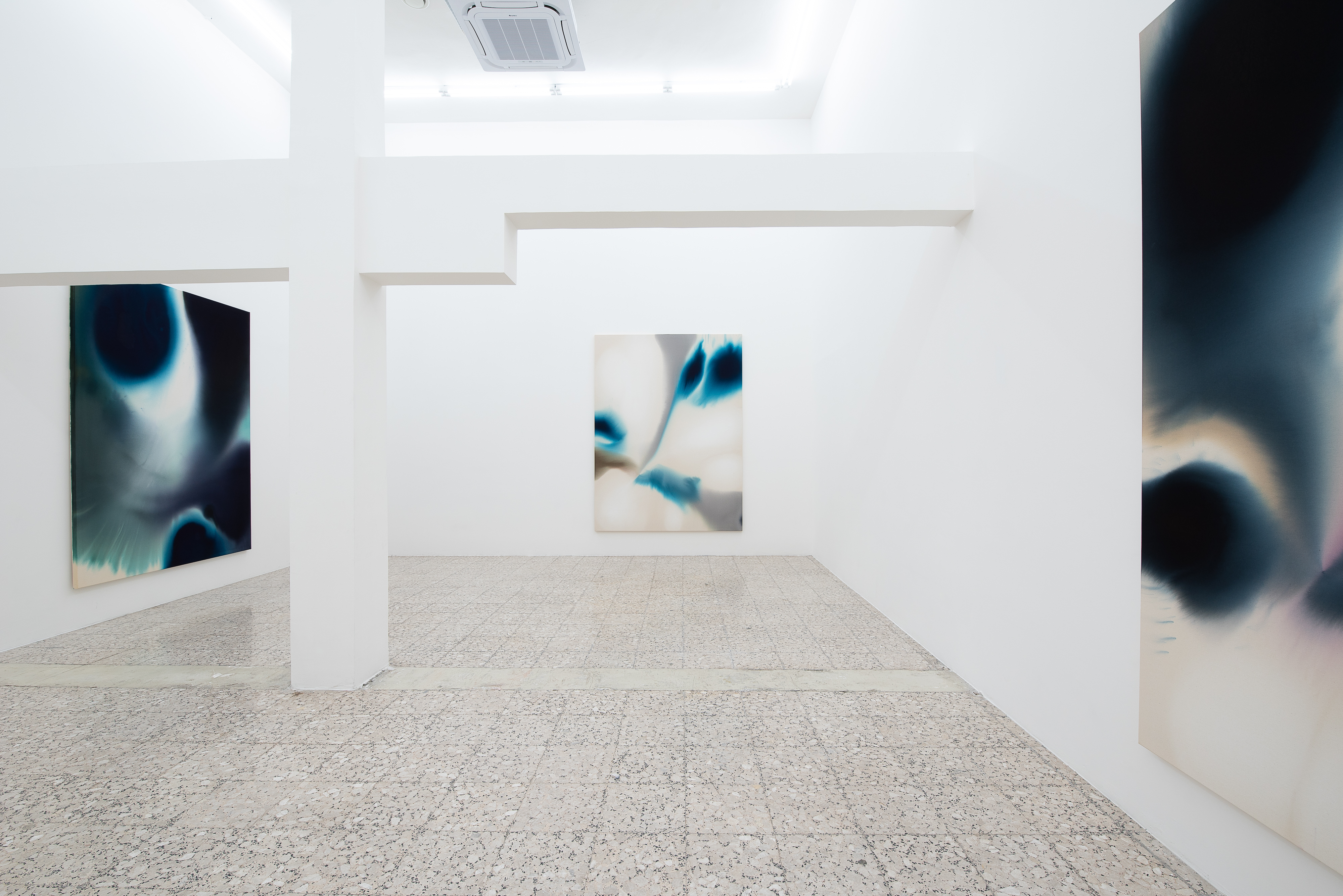
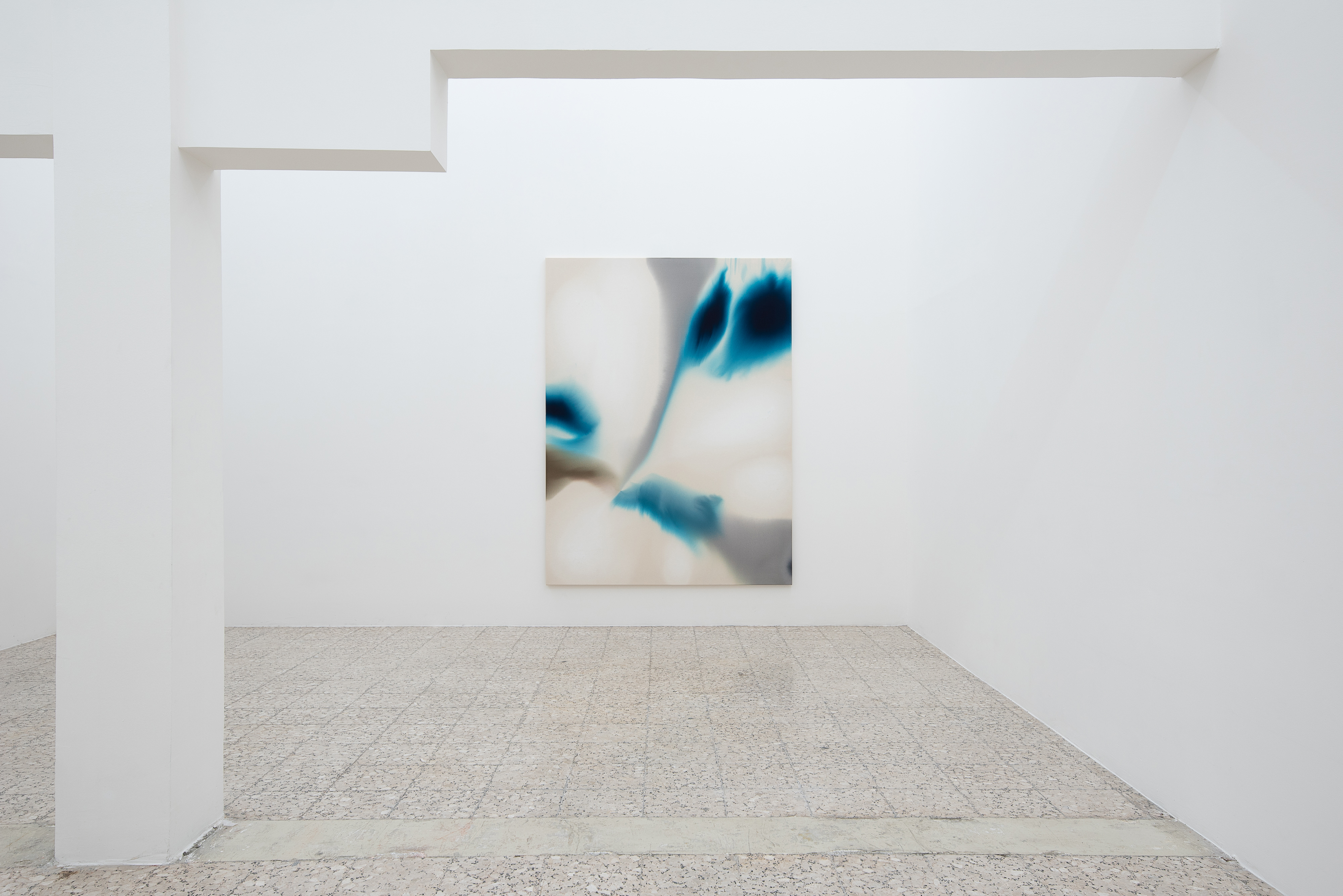





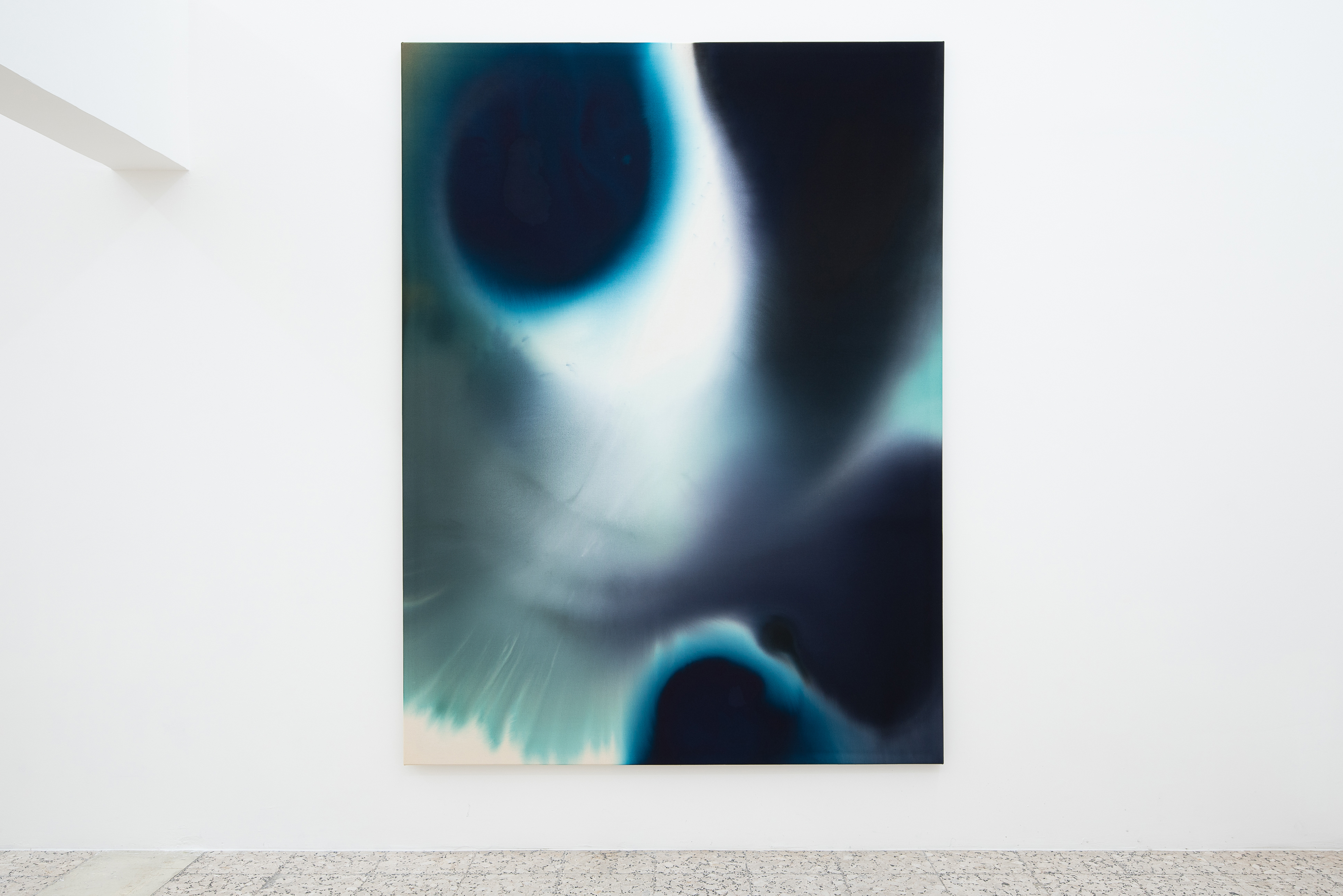
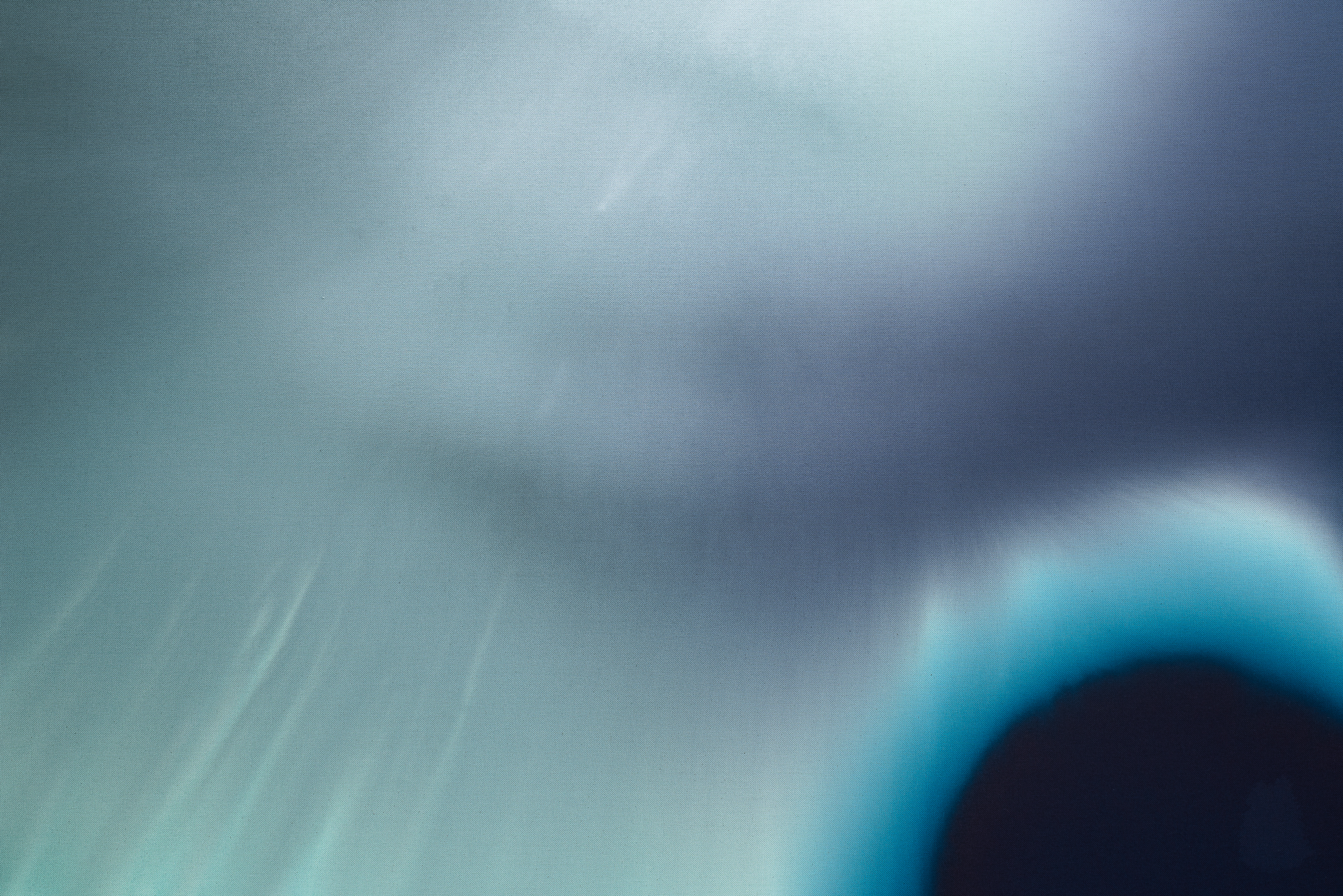
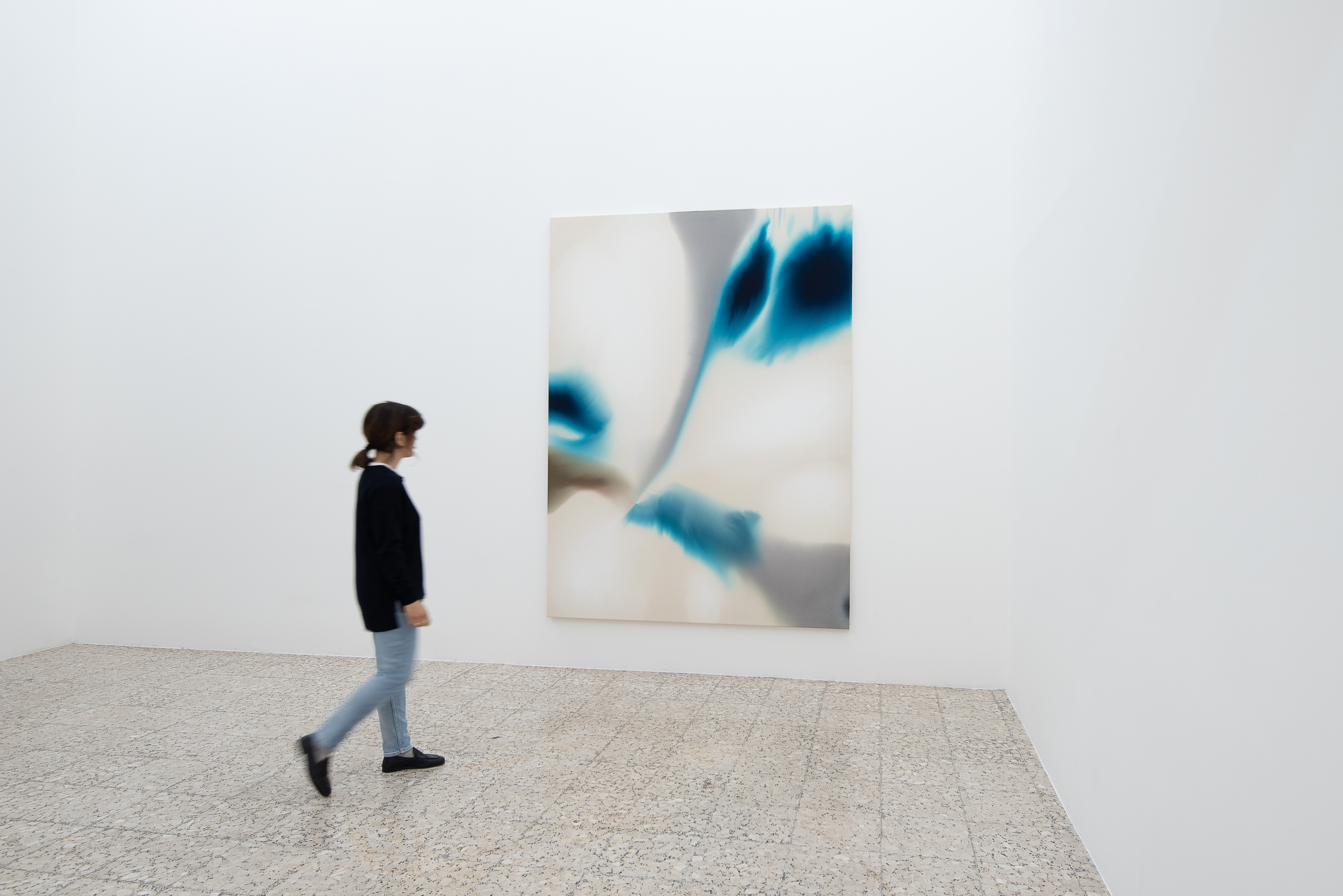
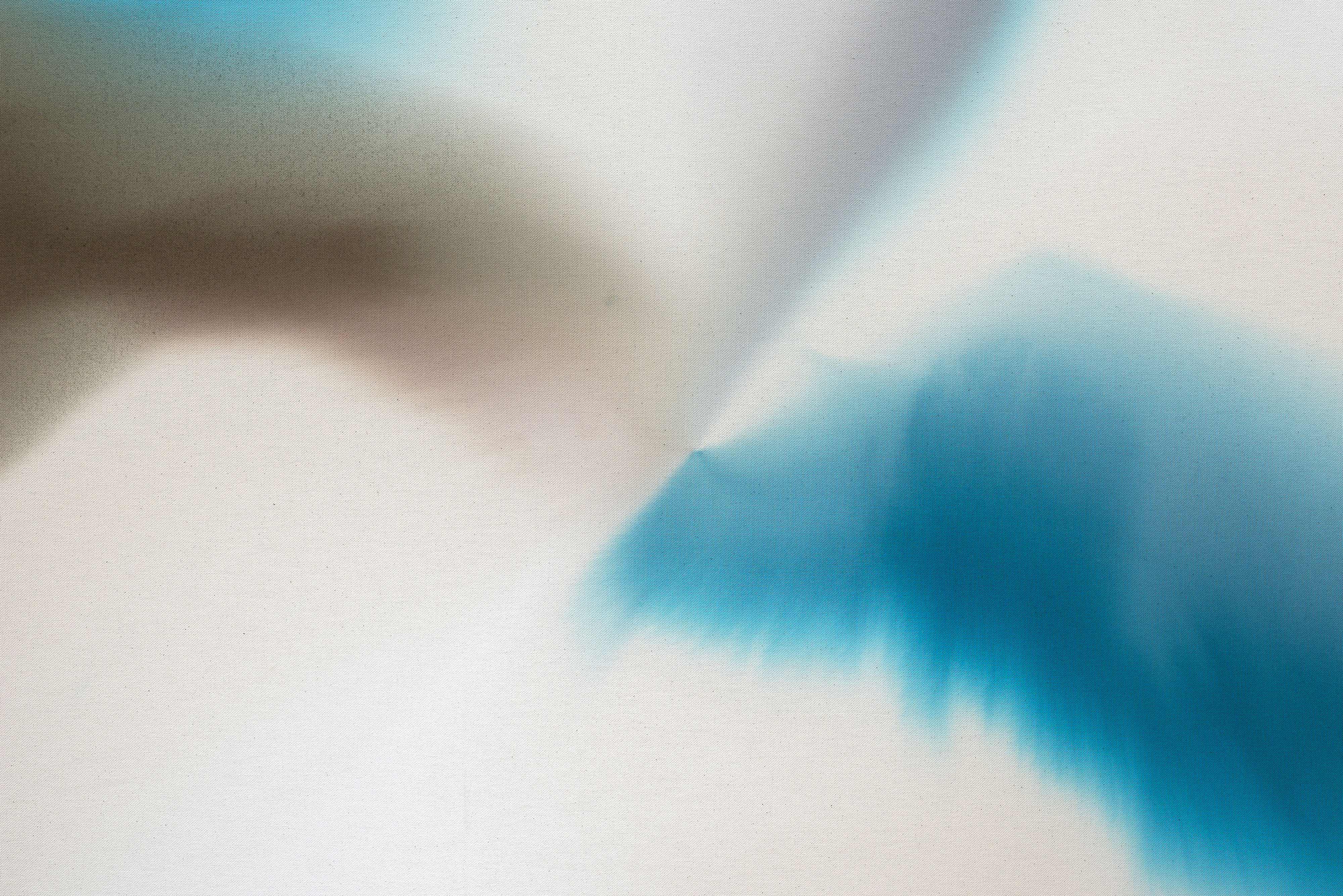
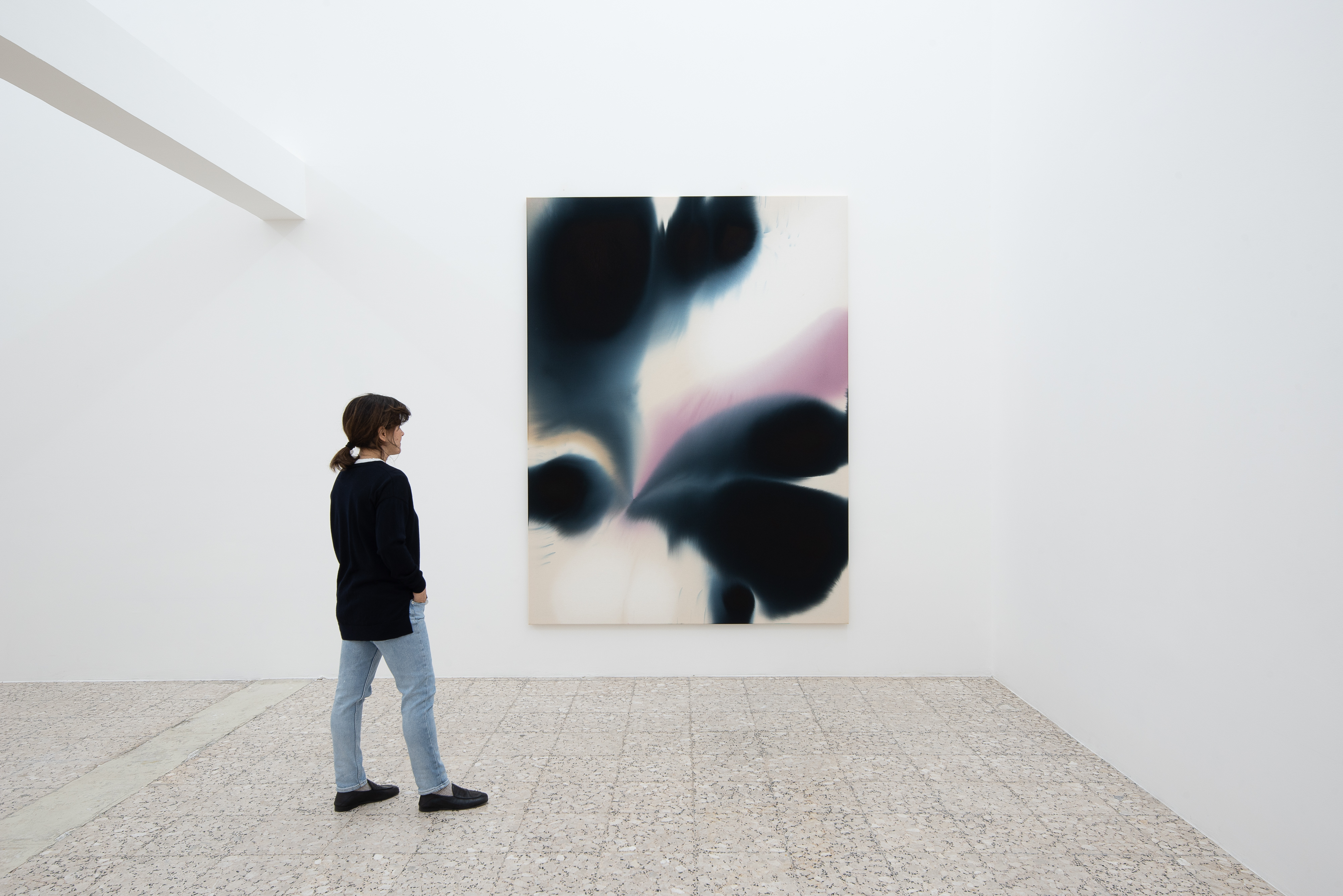
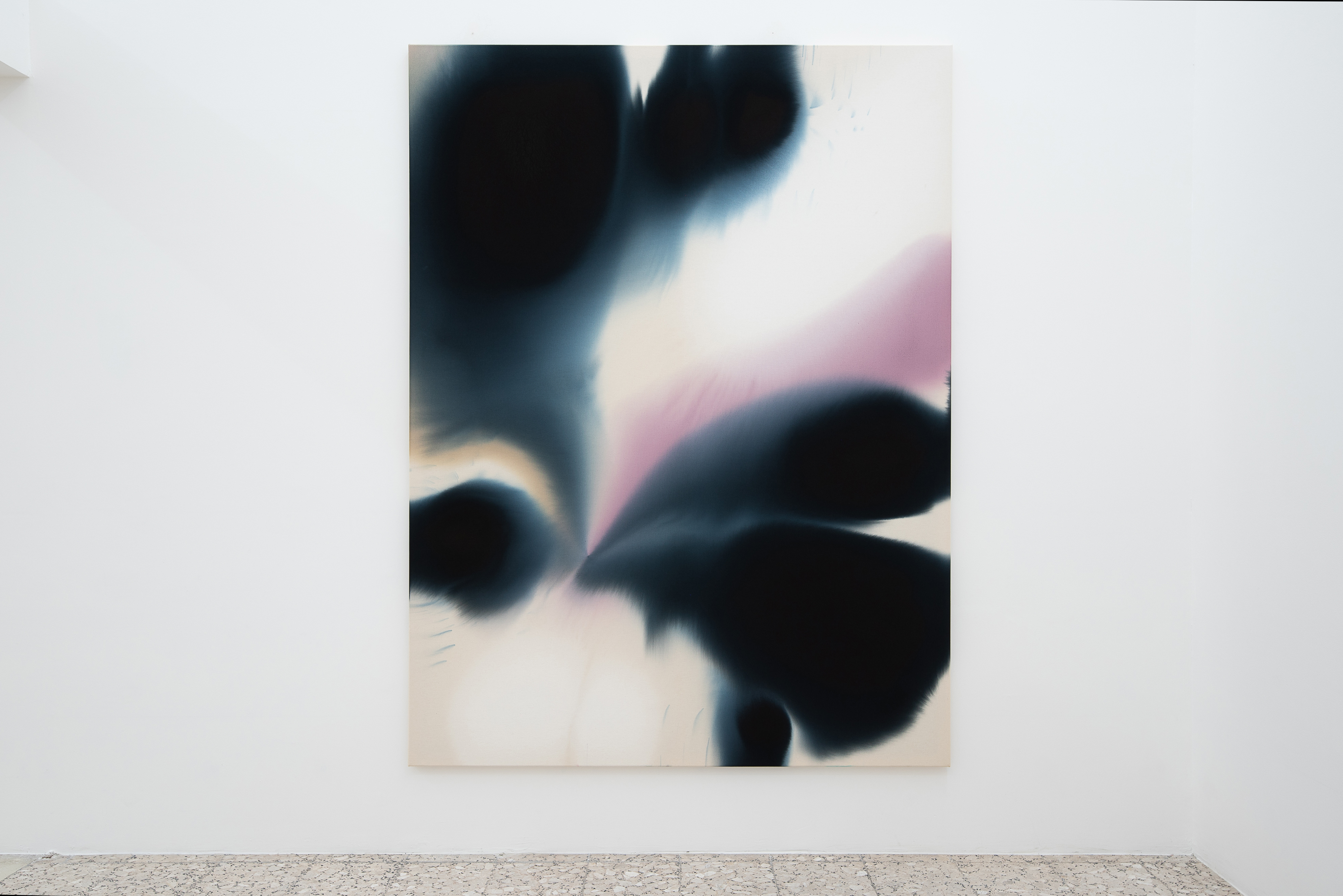
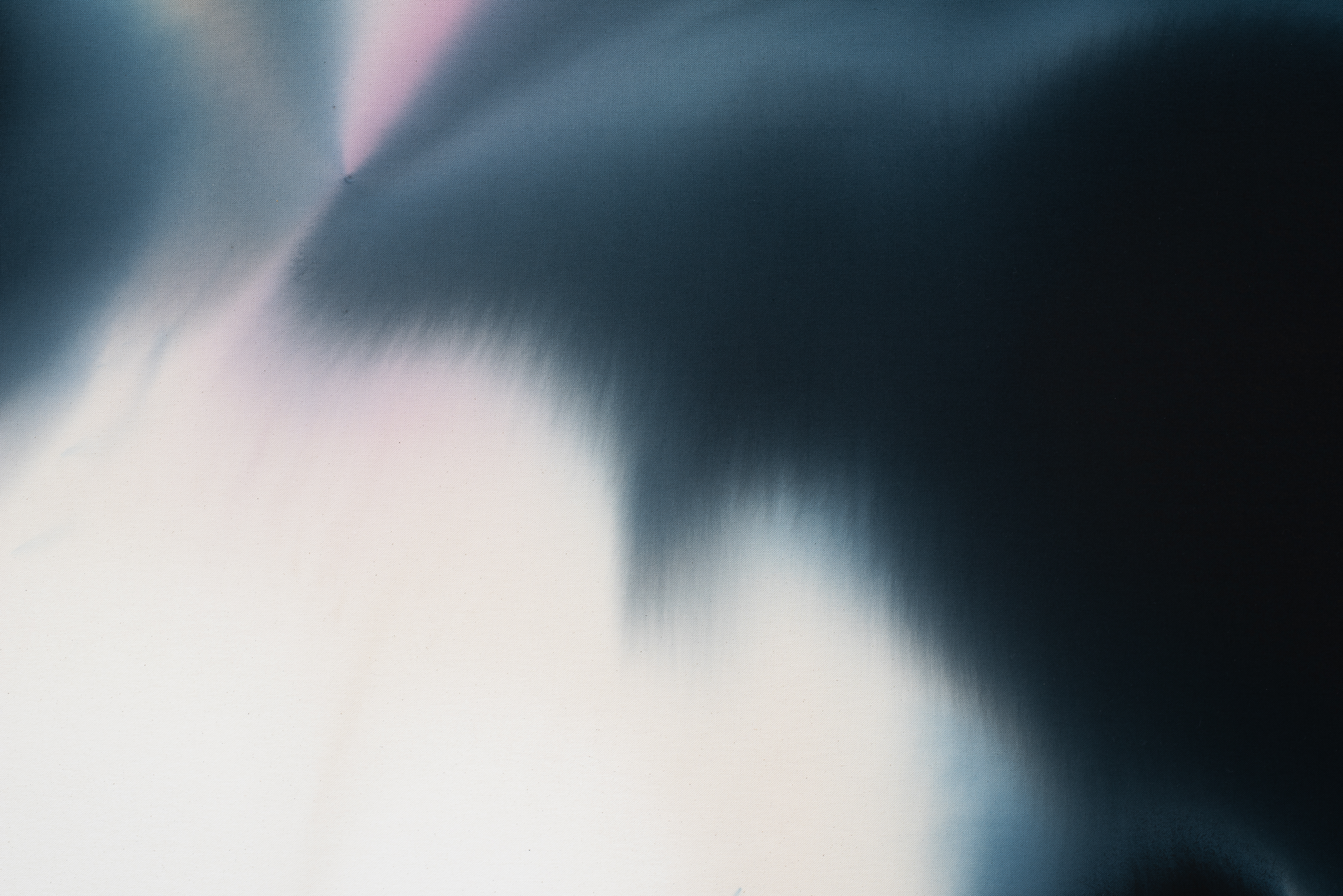
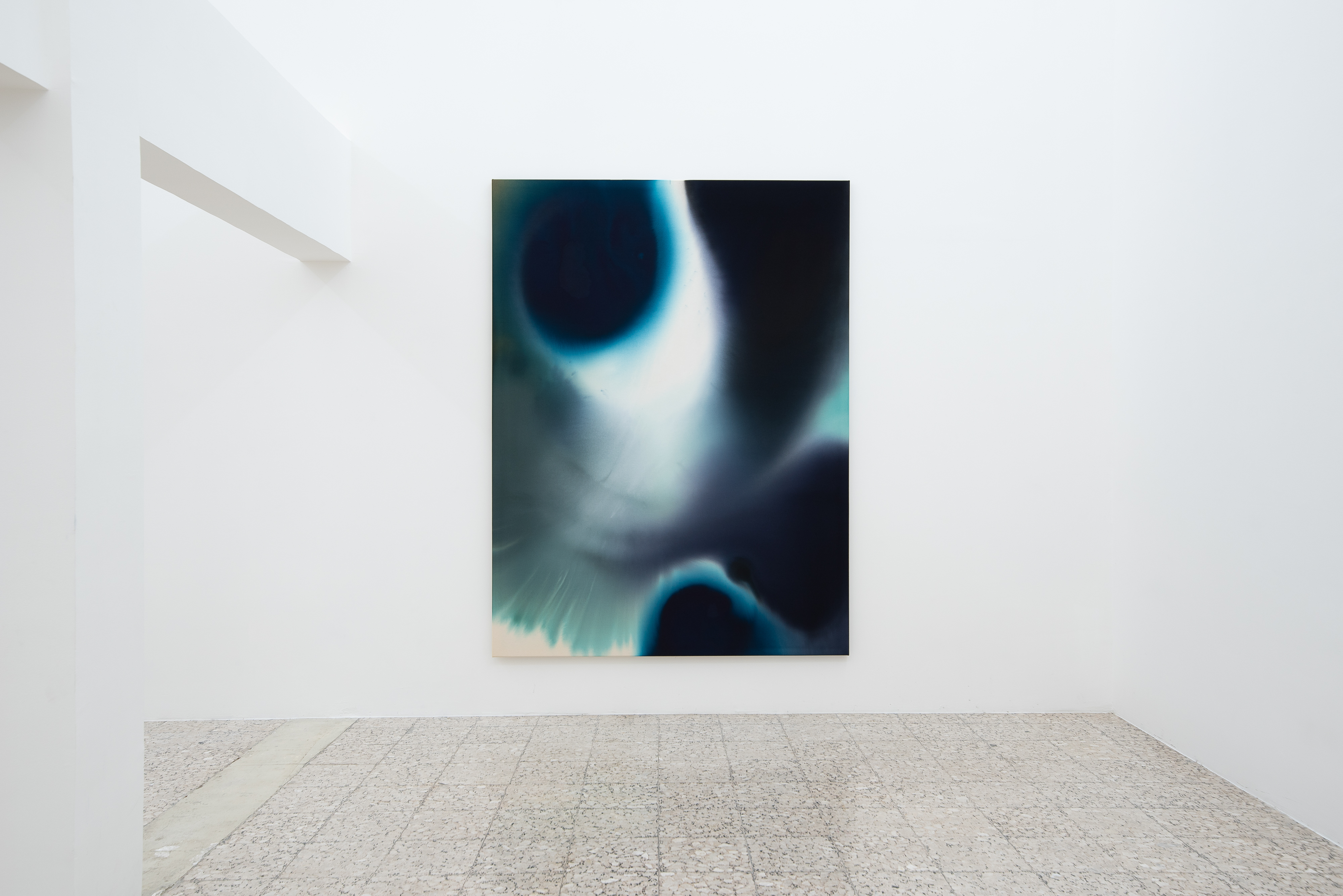
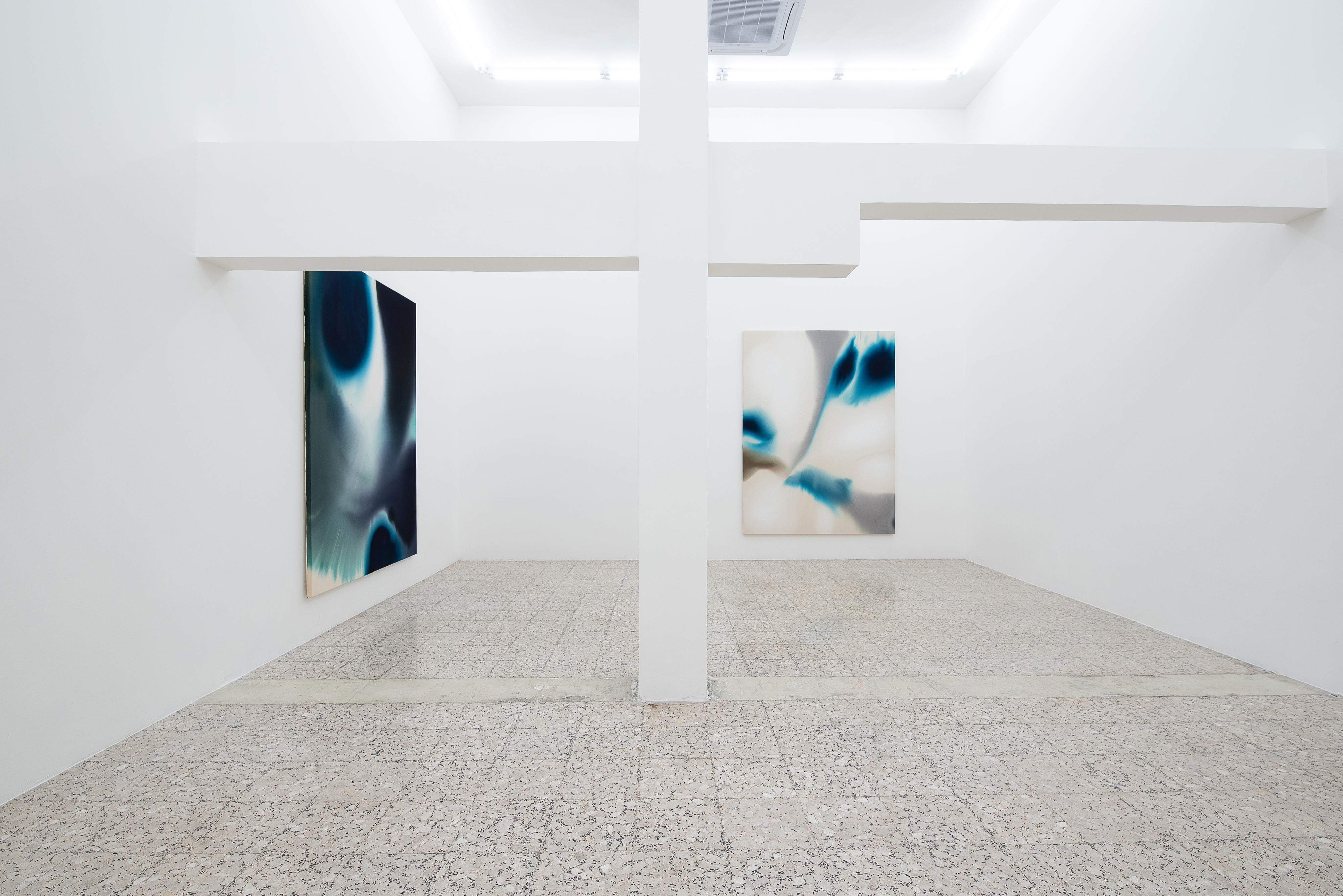
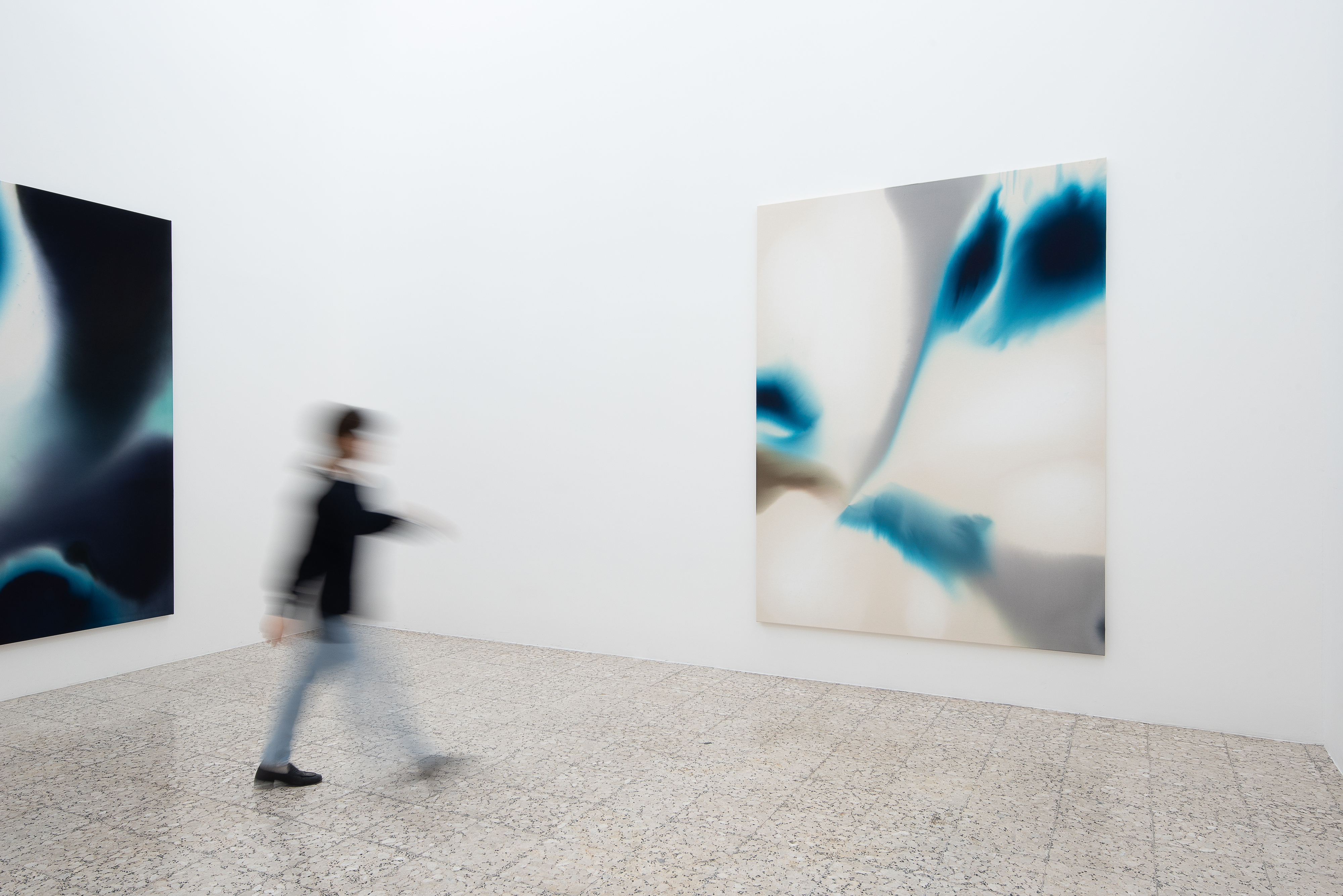


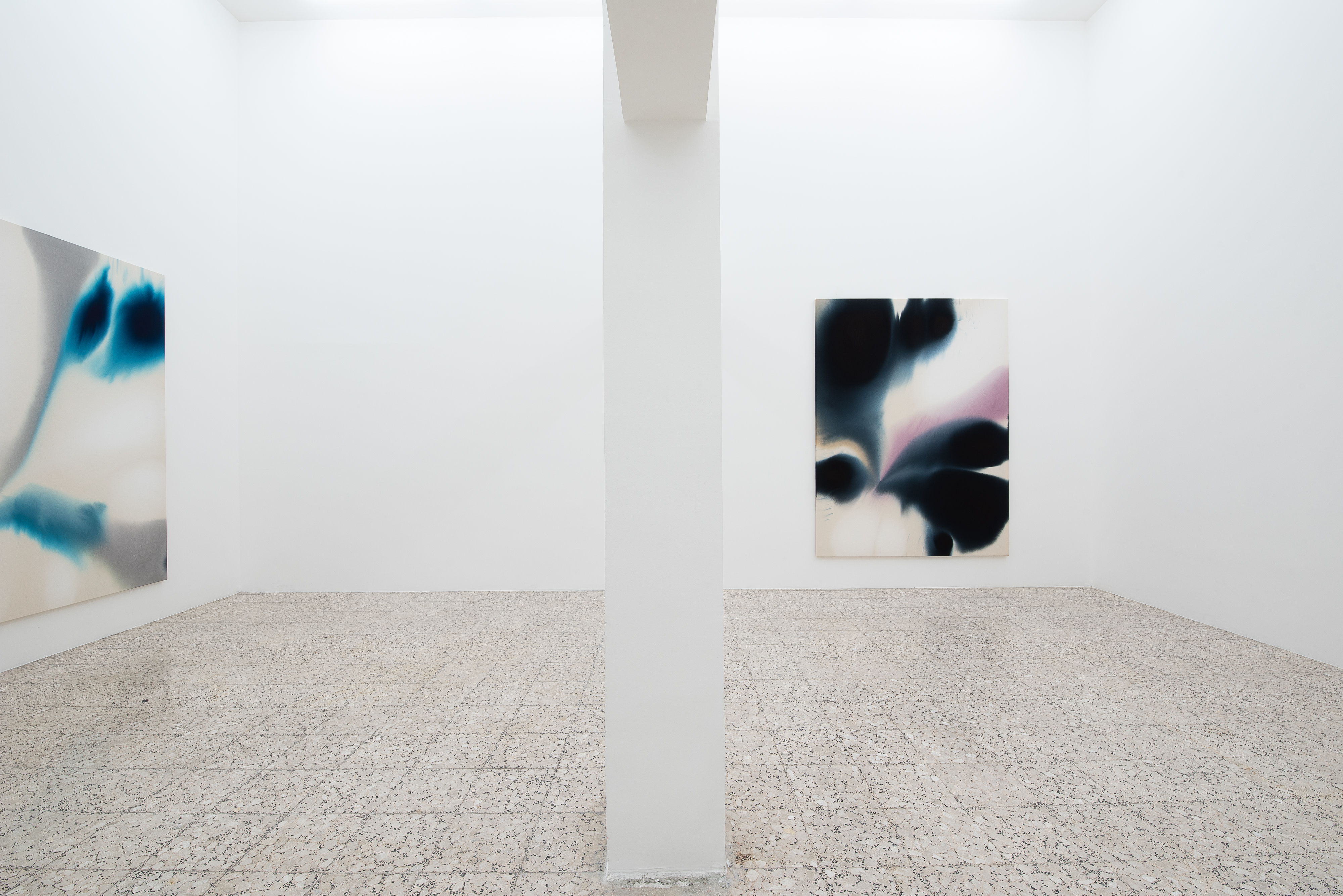
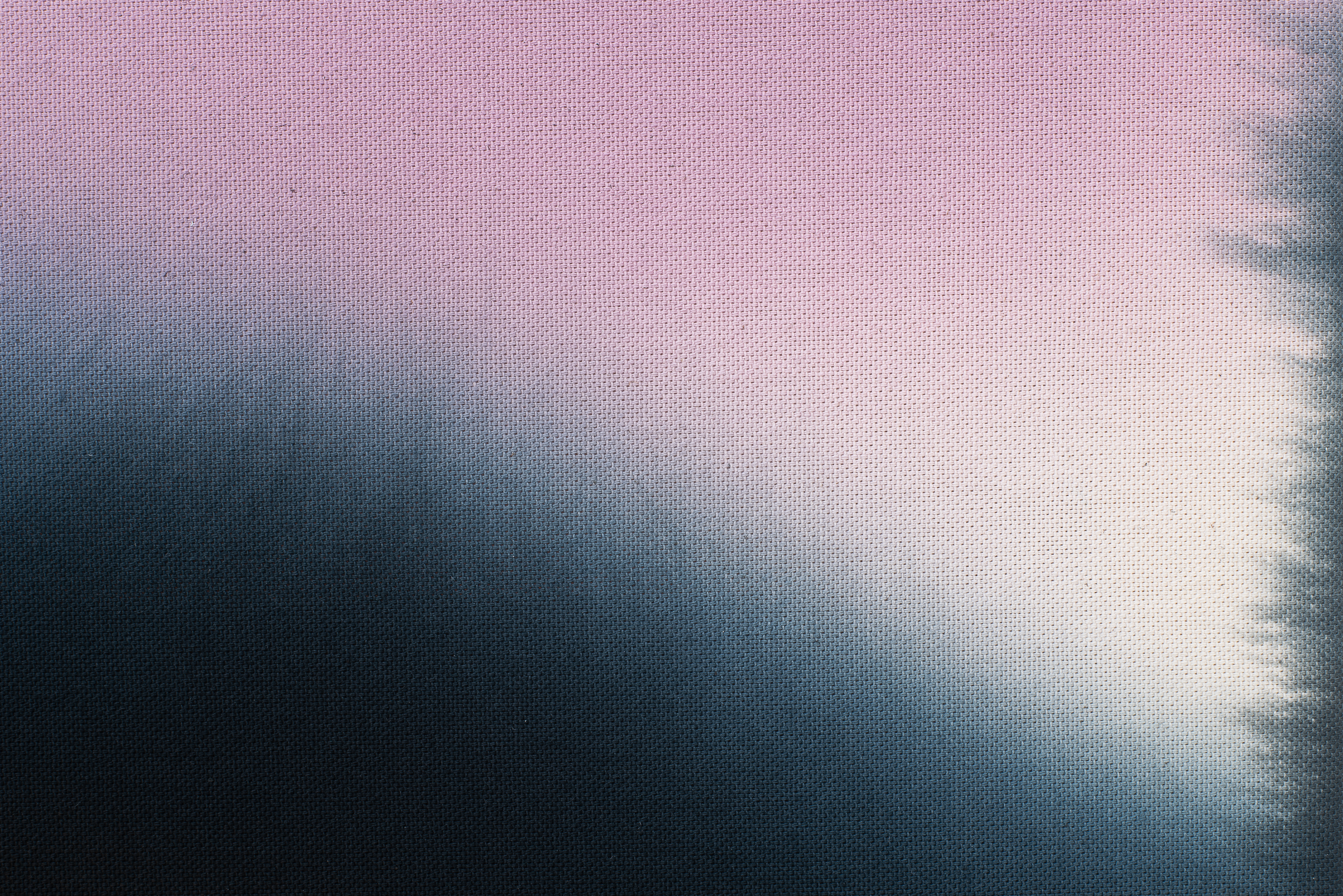
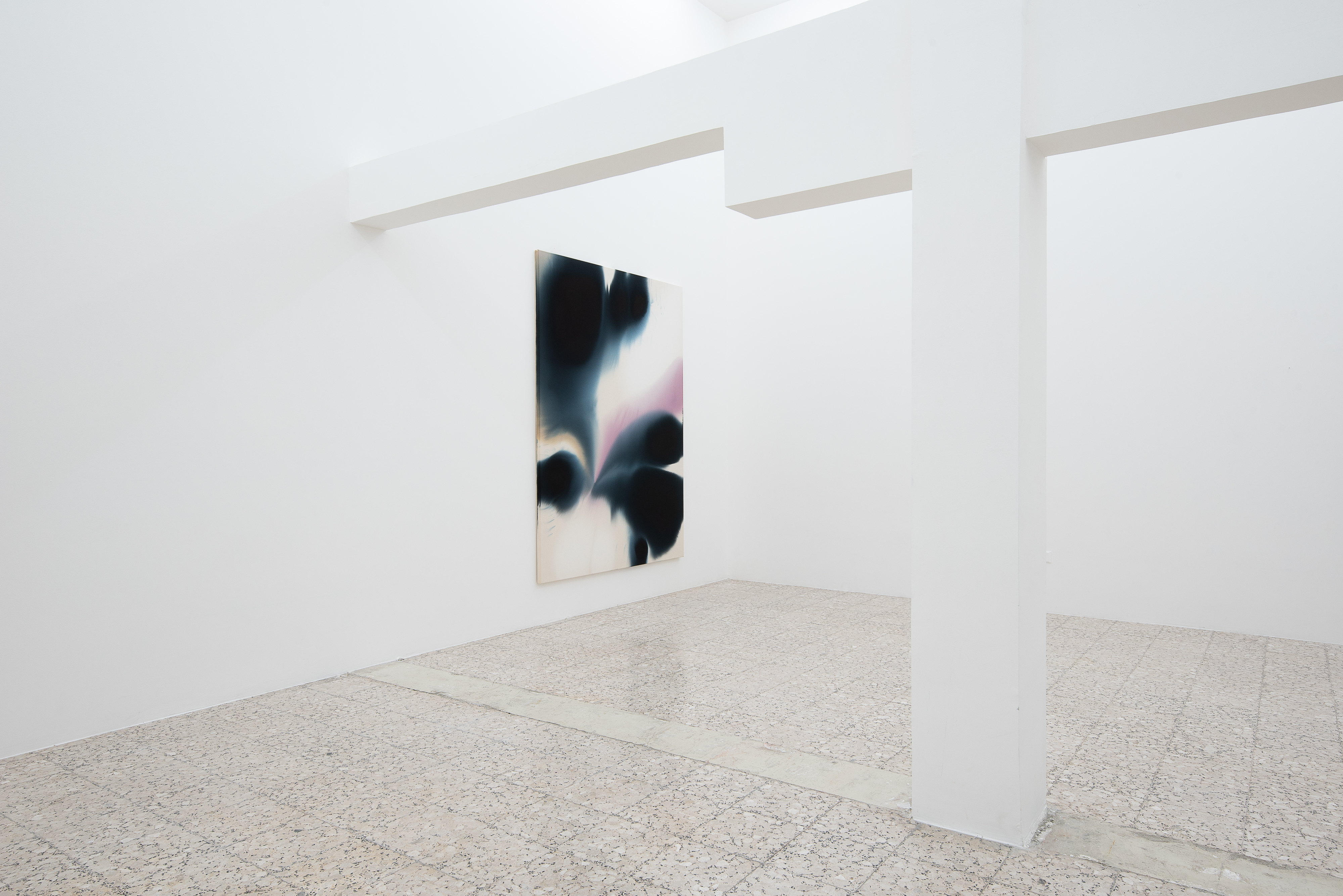
Giacomo Santiago Rogados’ first solo show in Cyprus, at eins gallery, attempts to shift our consciousness and present a sense of balance and unity through three large- scaled canvases.
Rogado is creating a space within the space. The constellation resembles a unique universe, a timeless spot where the viewer can enter and freeze time. The notion of liberation from the constant flow and counting of time grows through the search for a pause. Abstract forms, contrasting surfaces, a fast-paced and at the same time decelerating rhythm bears a sense of harmony, as subconsciousness emerges on the surface, follows the light and then comes back to the present moment. It is an emotional act for both the beholder and the artist.
Rogado is creating a space within the space. The constellation resembles a unique universe, a timeless spot where the viewer can enter and freeze time. The notion of liberation from the constant flow and counting of time grows through the search for a pause. Abstract forms, contrasting surfaces, a fast-paced and at the same time decelerating rhythm bears a sense of harmony, as subconsciousness emerges on the surface, follows the light and then comes back to the present moment. It is an emotional act for both the beholder and the artist.
The ongoing work series Intuition (from 2014) provides an insight of infinity. The exhibited artworks are new works that belong to this series. With his latest imagery, Rogado takes us on an interstellar trip through time and space. While travelling through psychedelic worlds and vibrating structures, Rogado not only allows us to take a break, but also encourages us to take a step back and relate to a greater whole for a moment that could last forever.
Olympia Tzortzi
Olympia Tzortzi
2021
constant change
Solo show
Kunsthalle
Kunsthalle
21/8 – 3/9/21
Luzern
Luzern


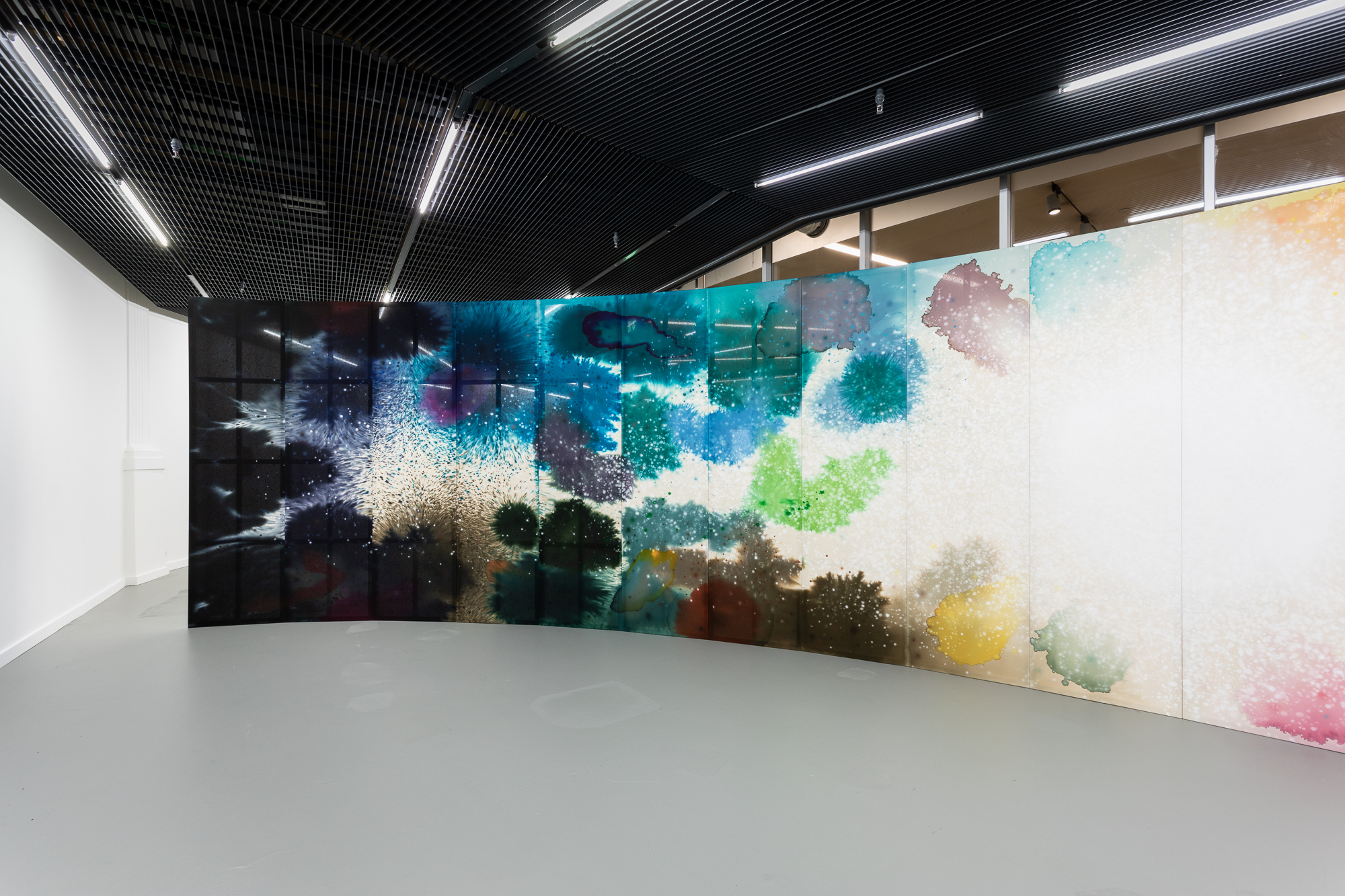
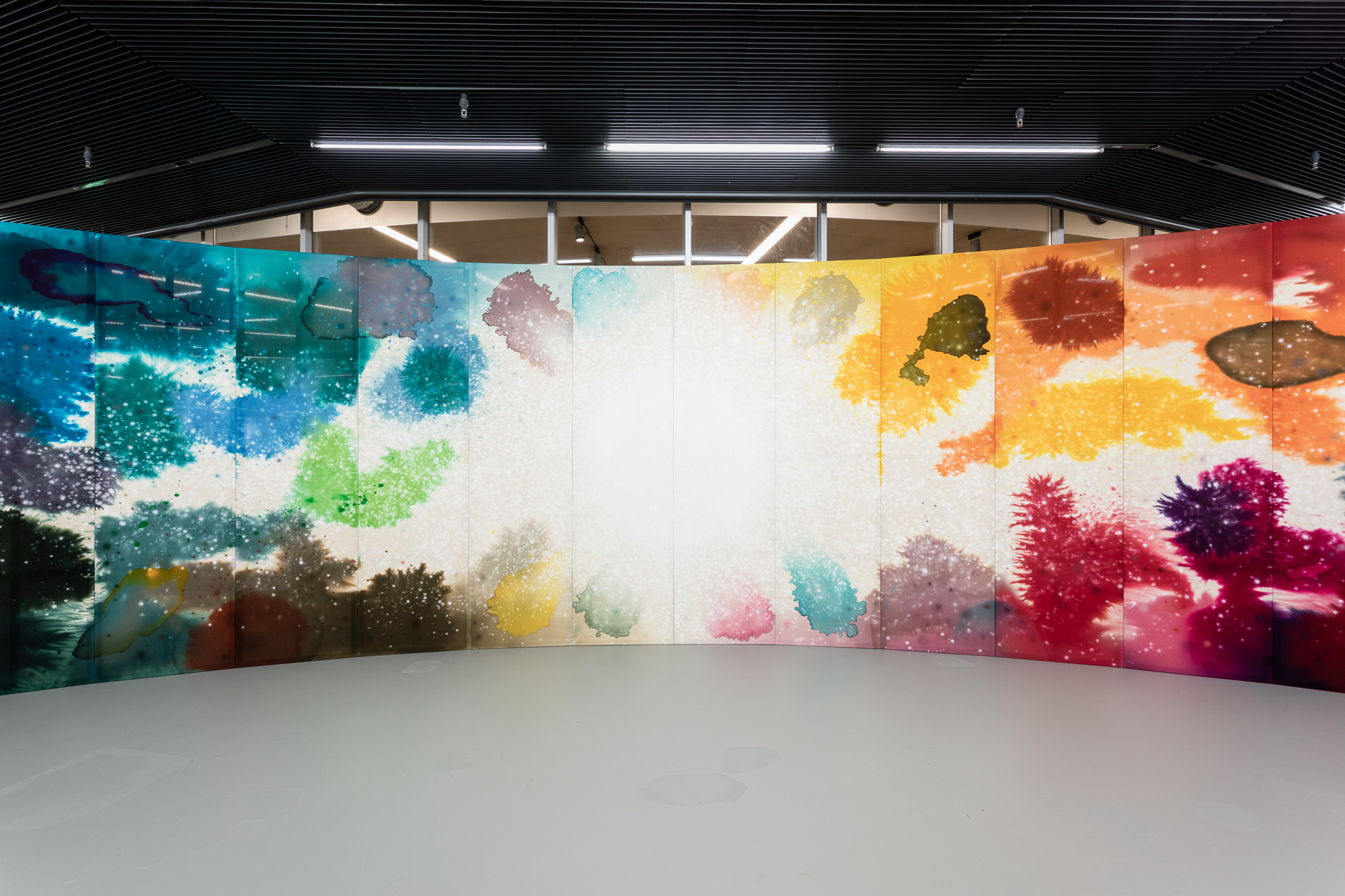
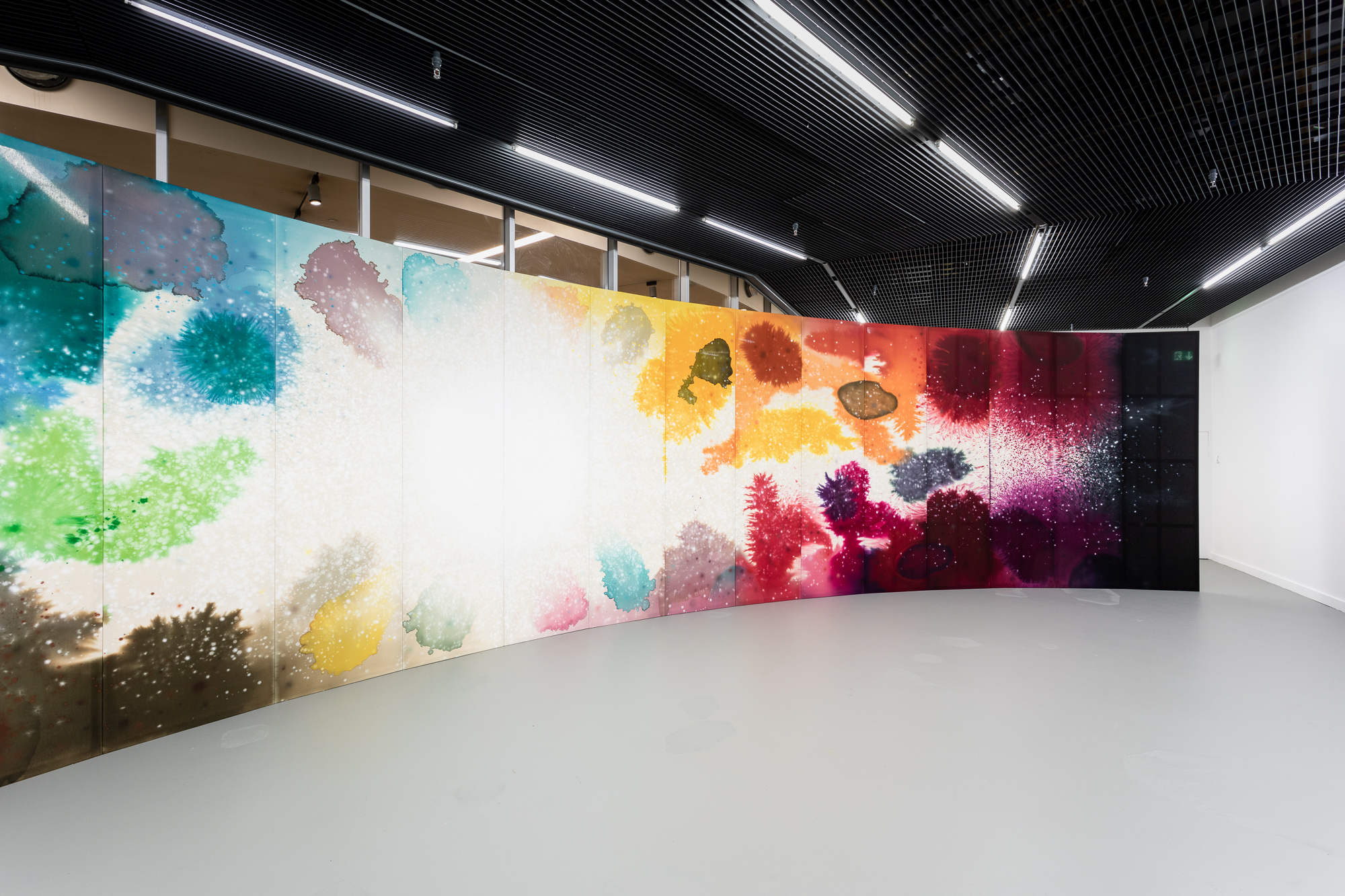
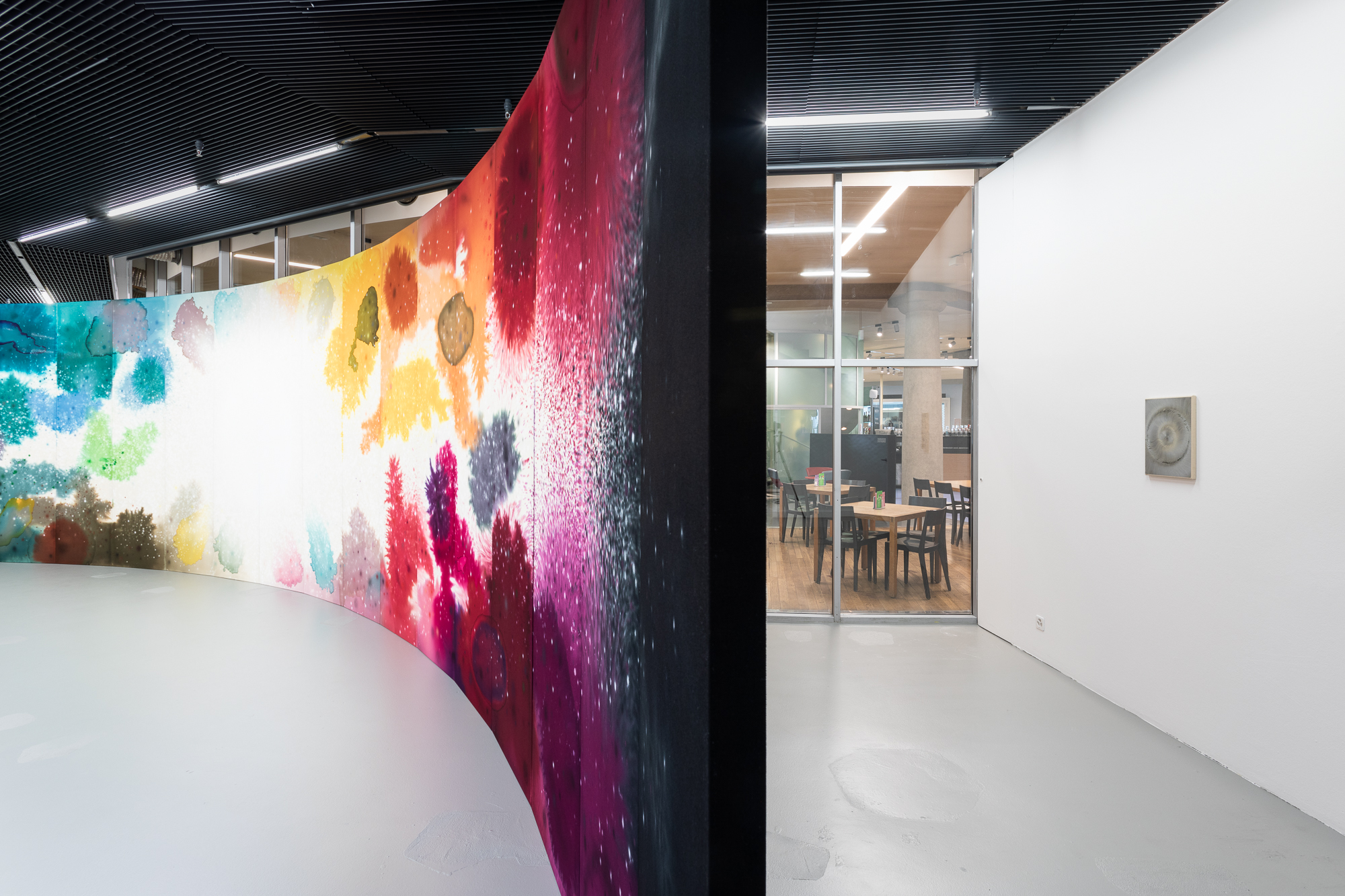
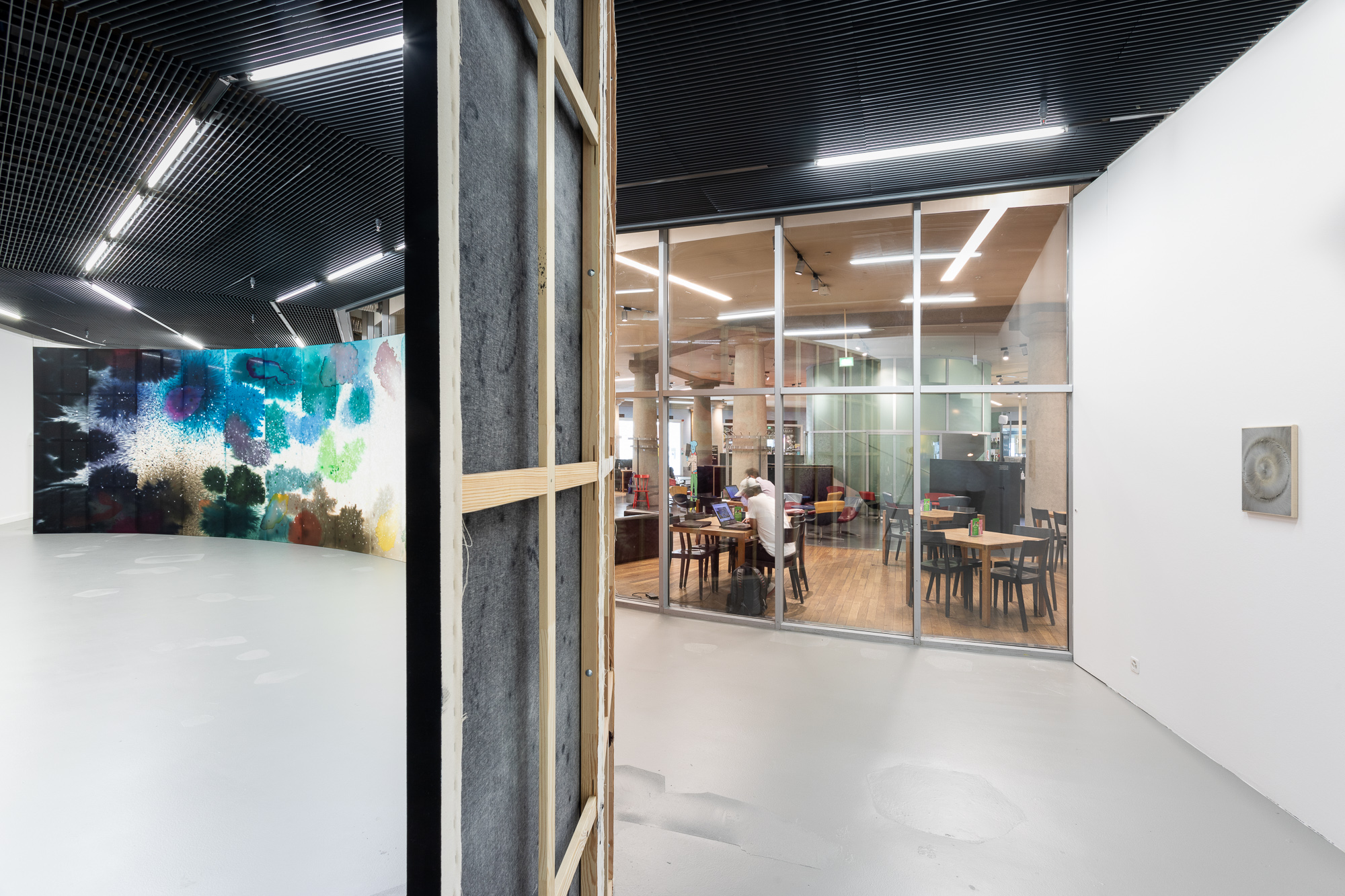
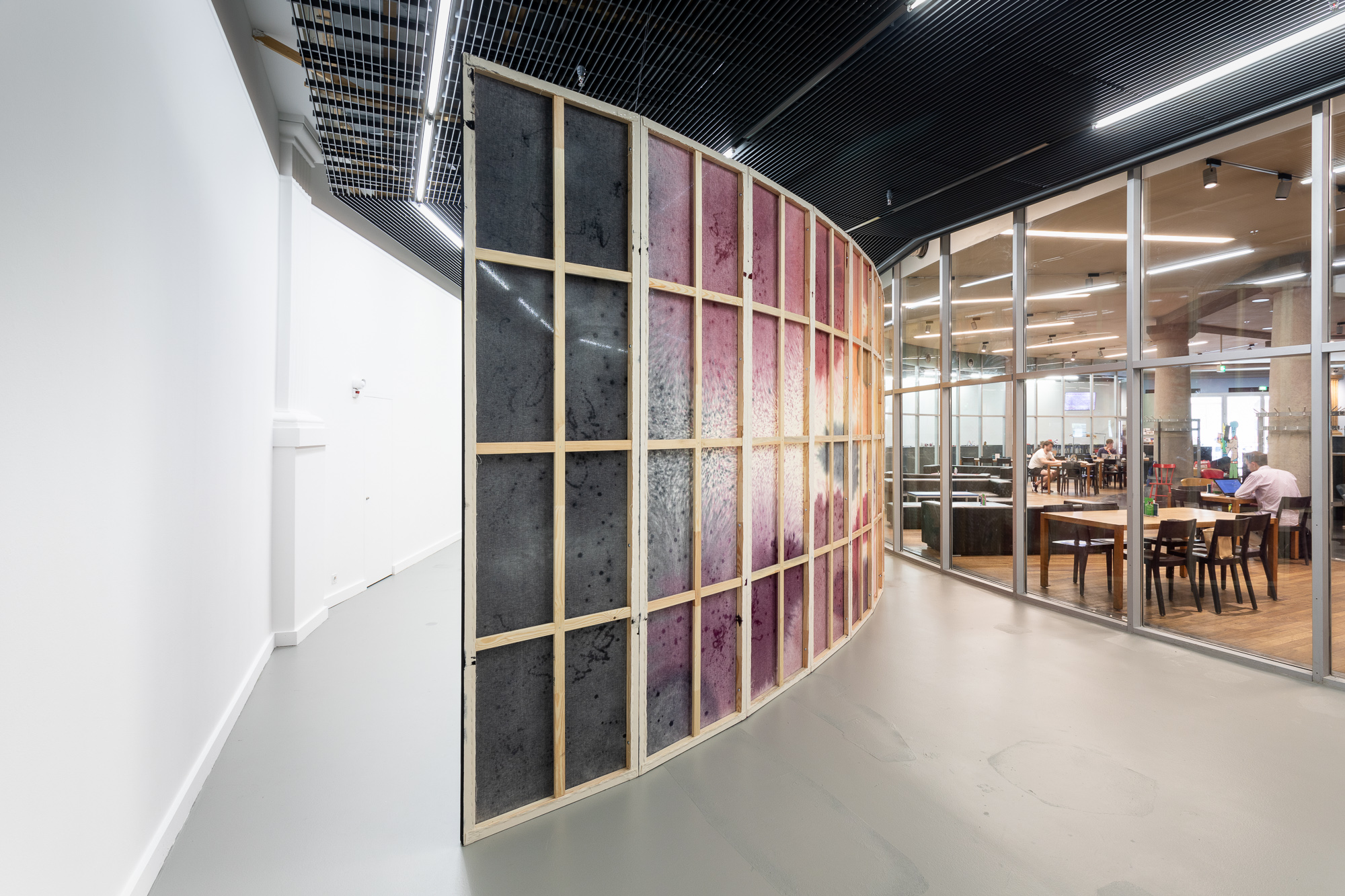

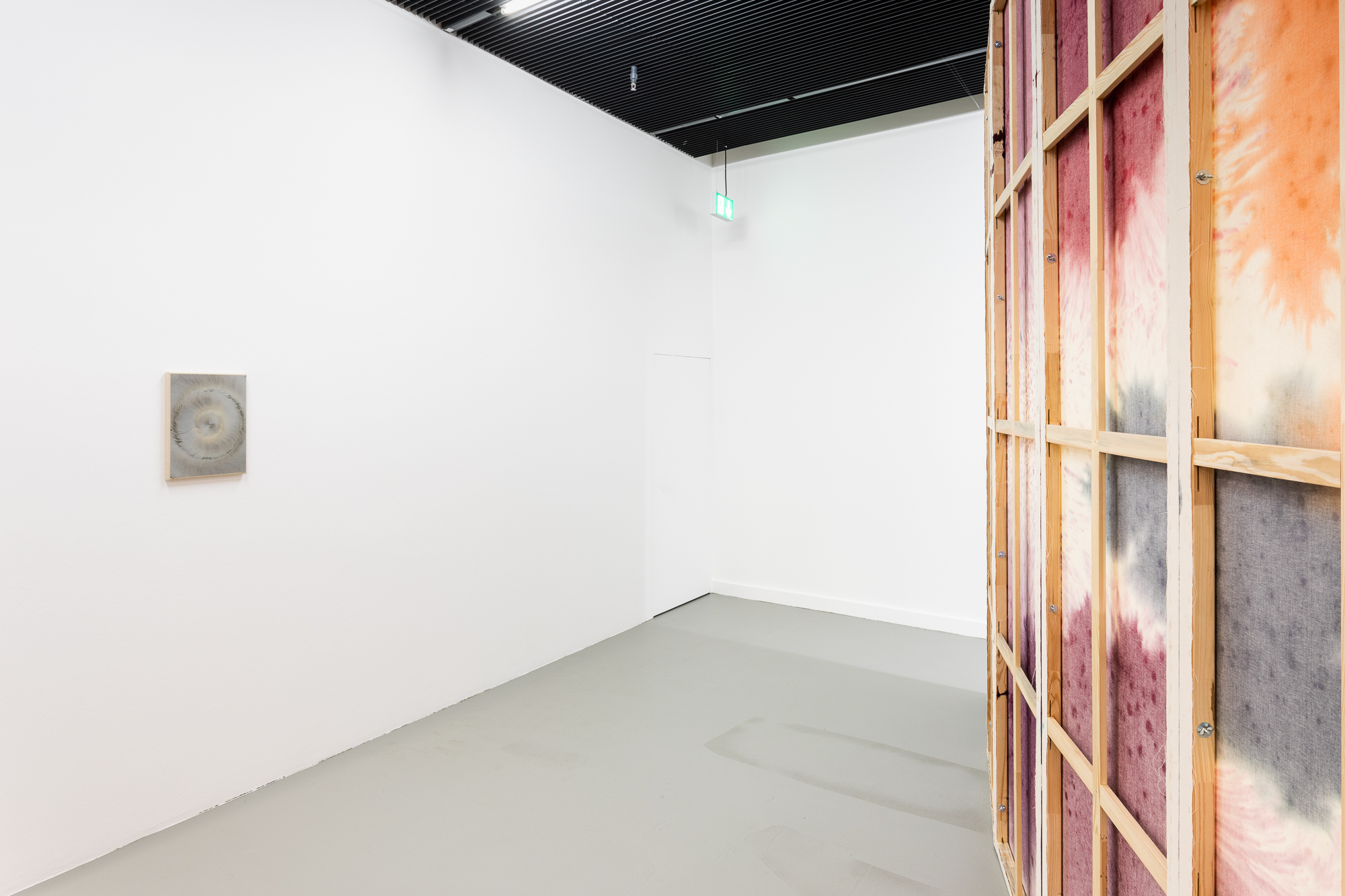
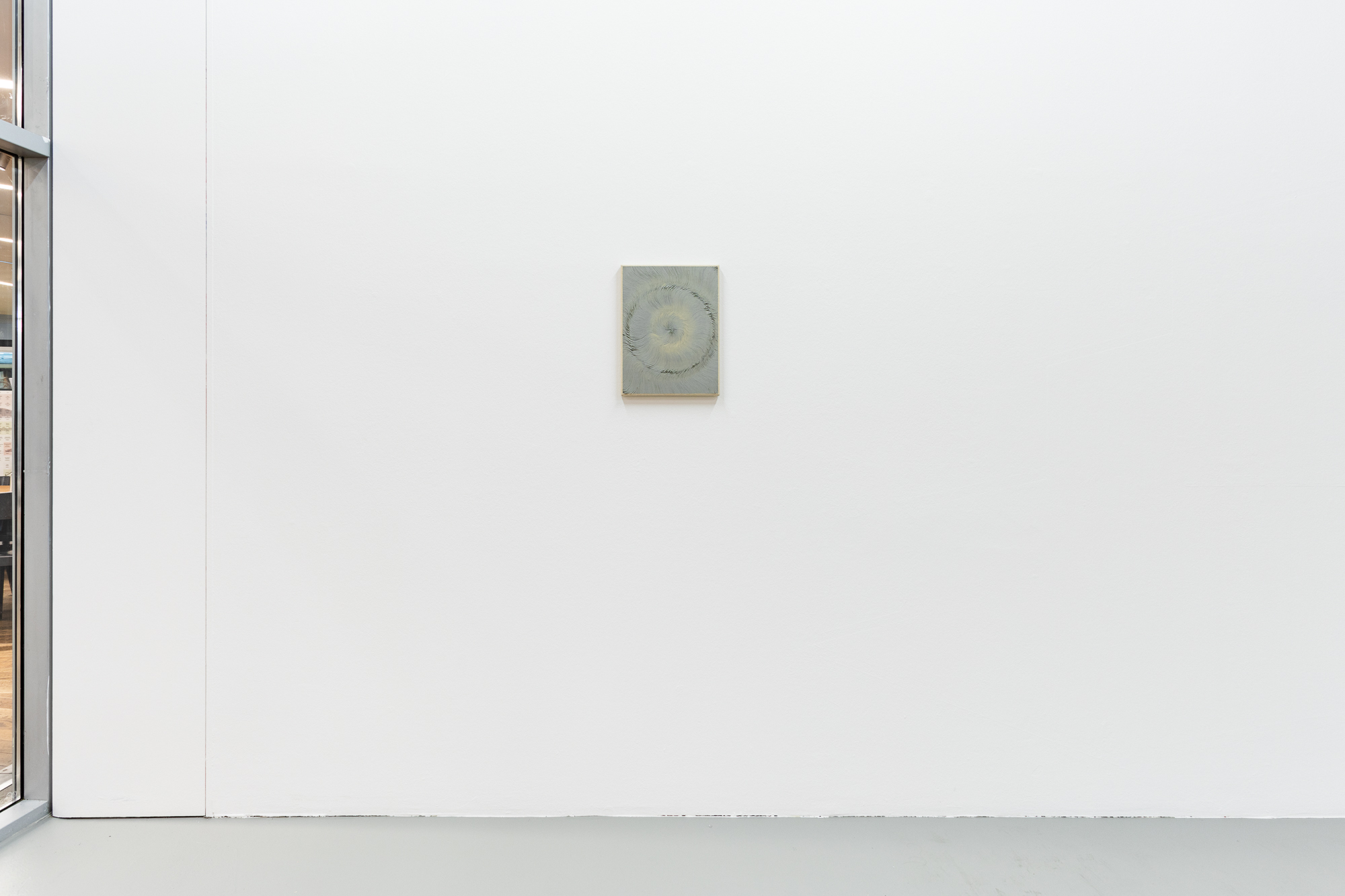
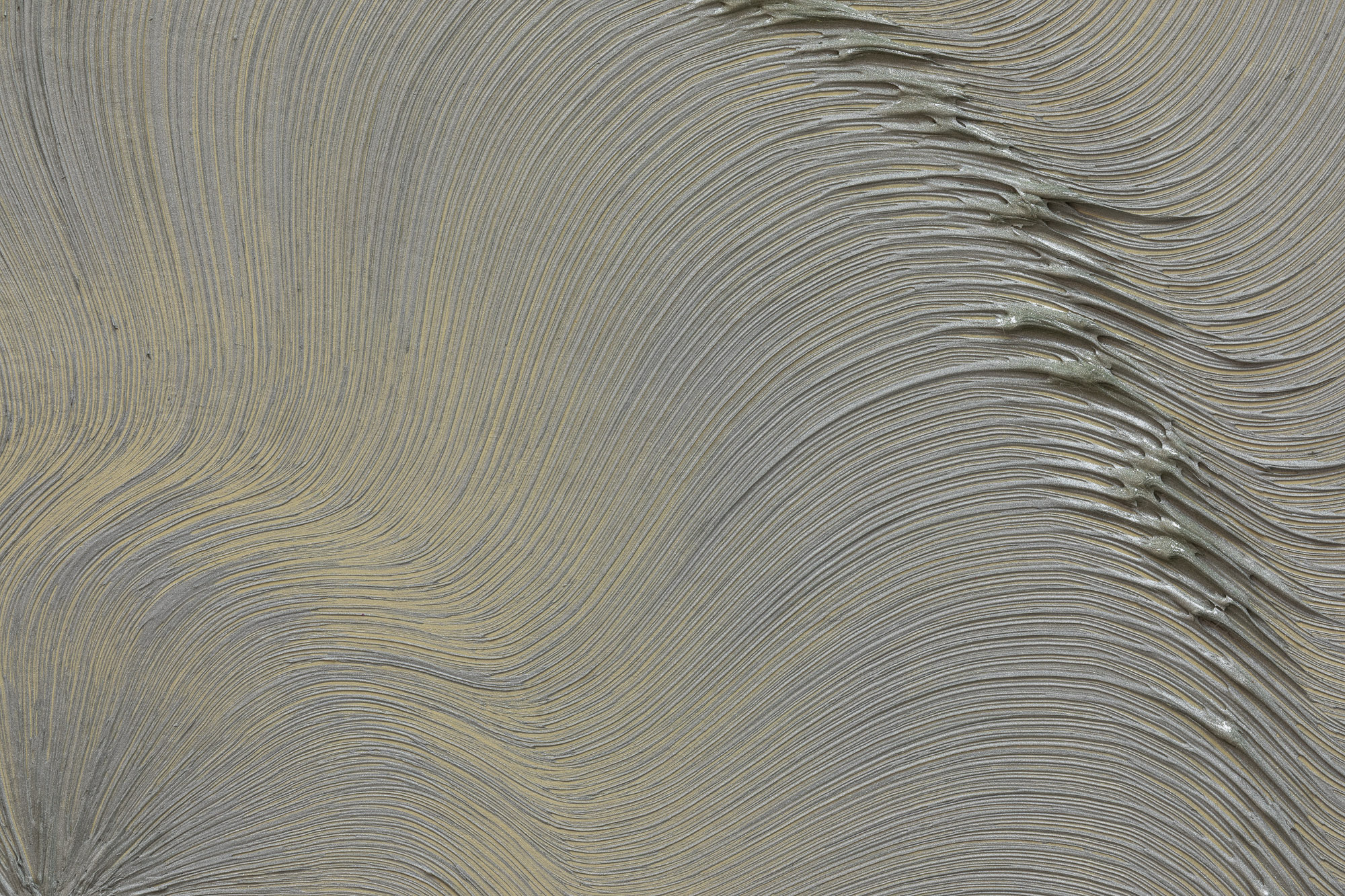
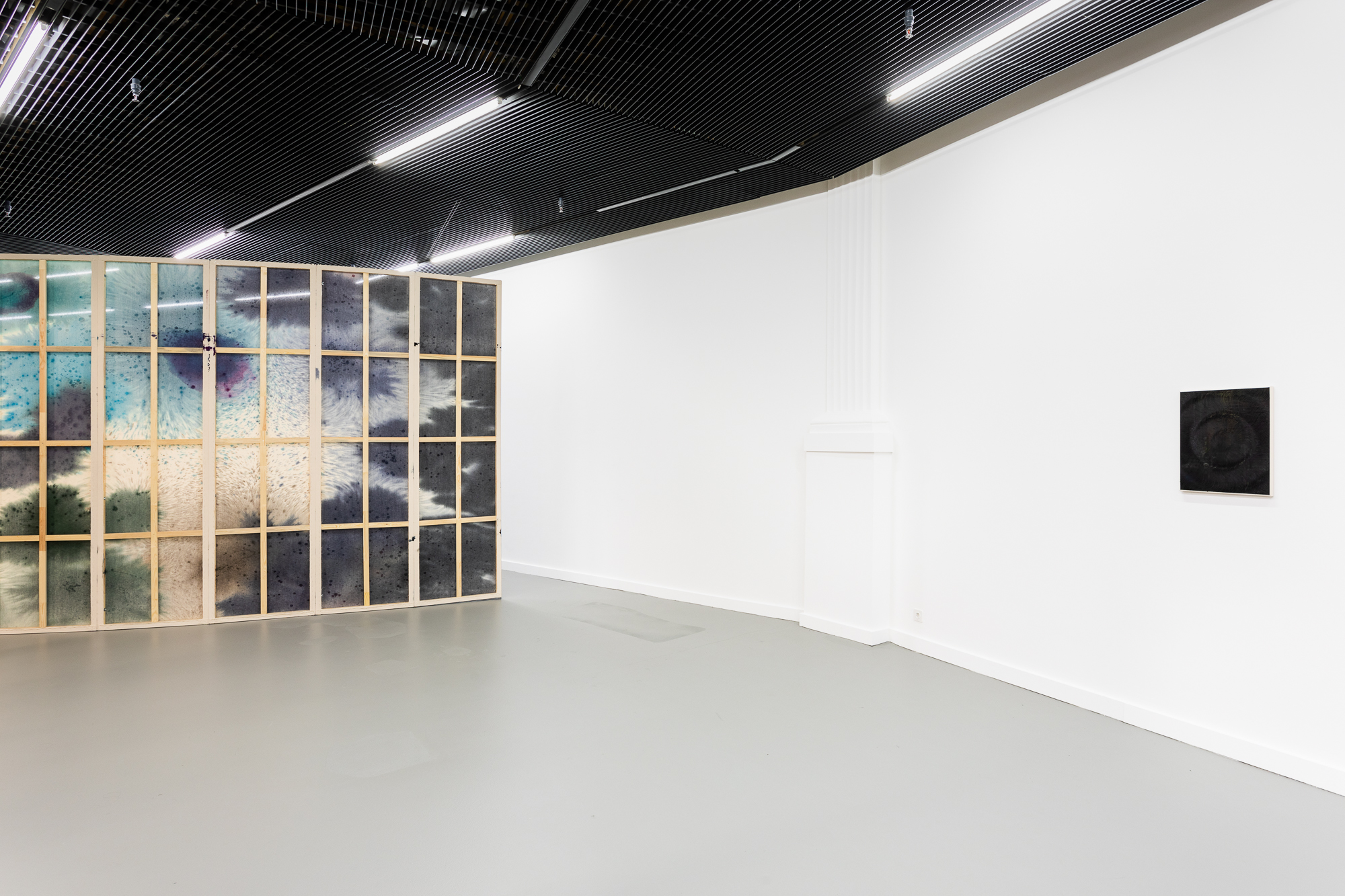
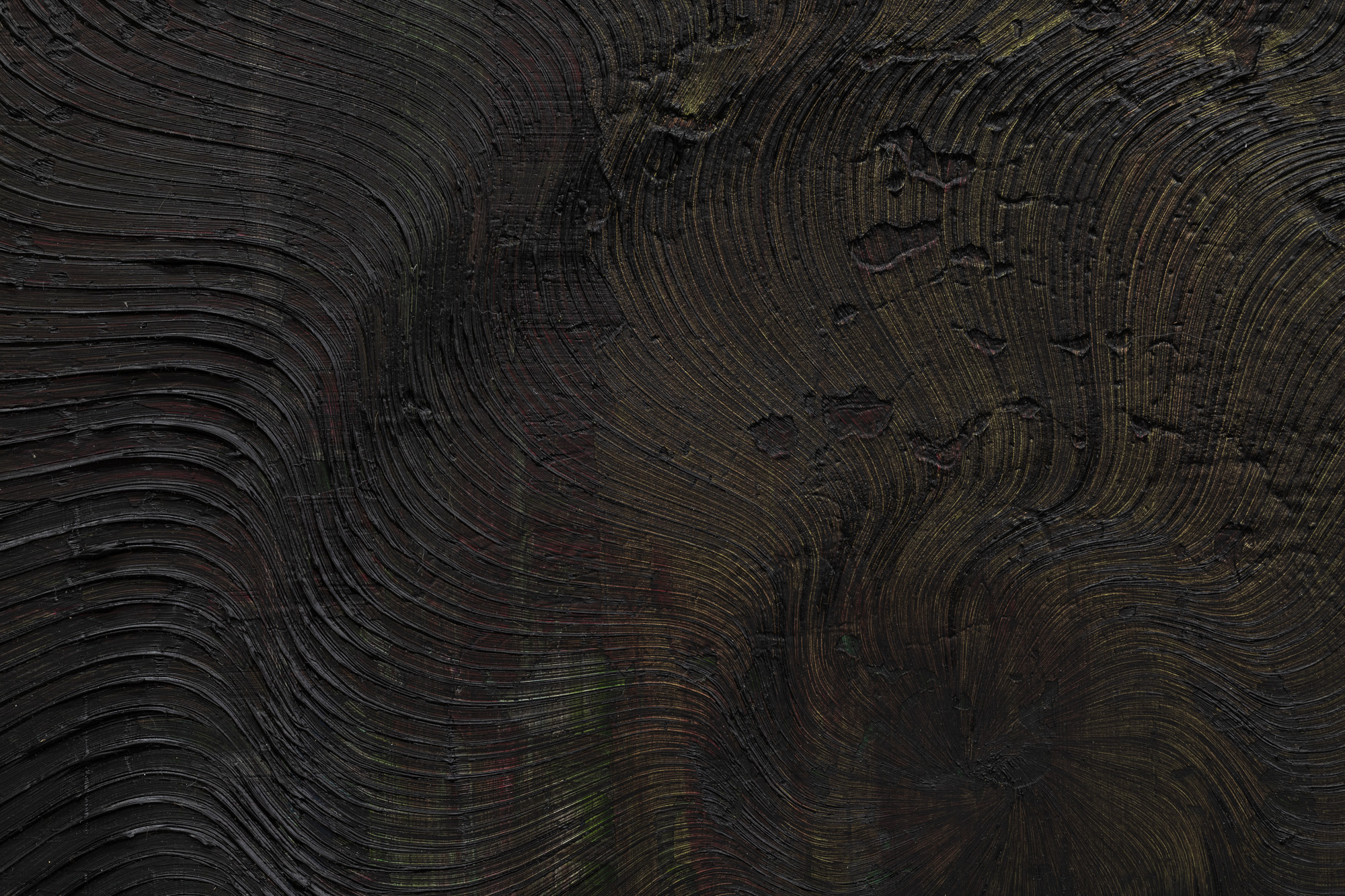
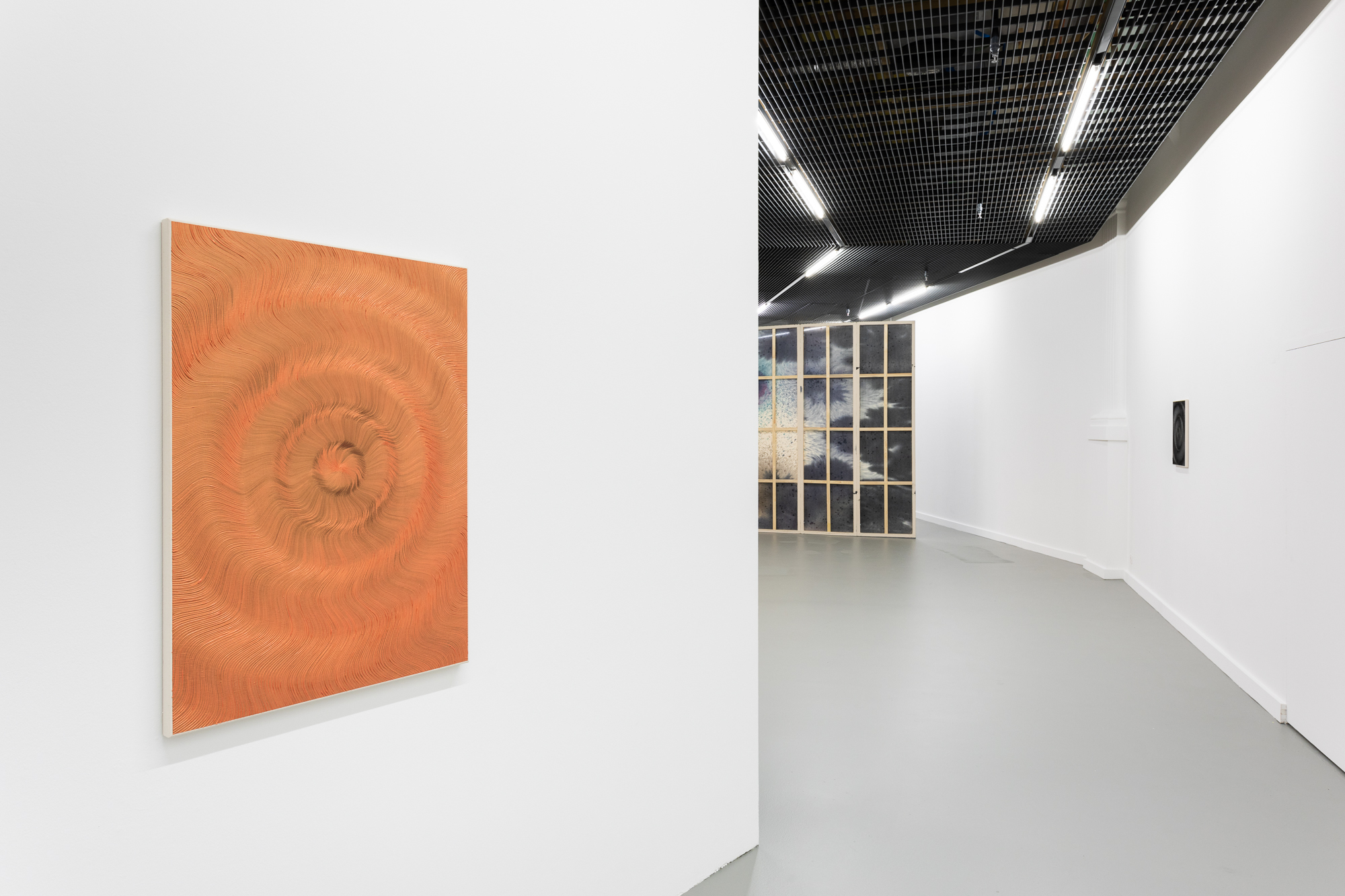
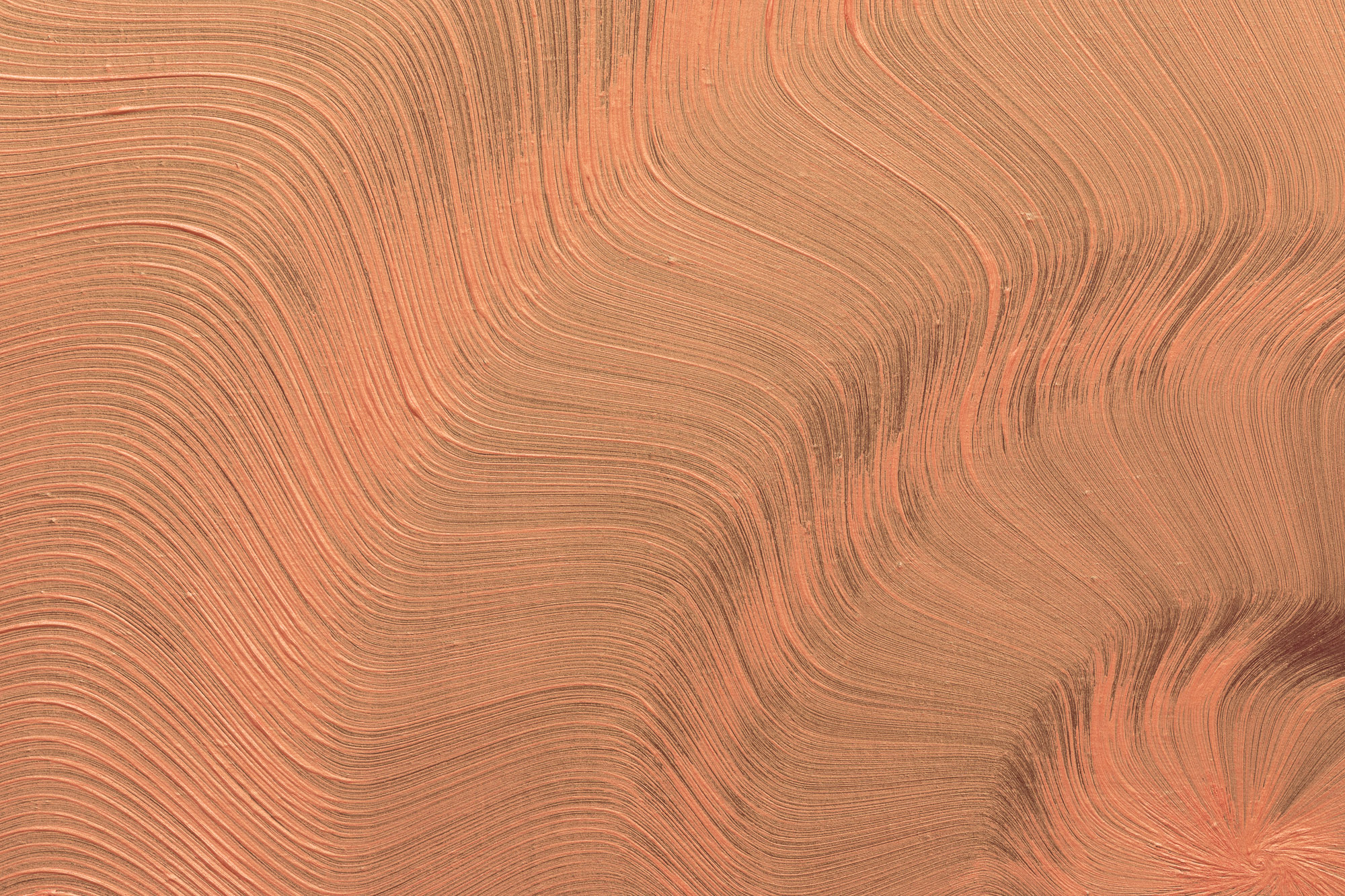
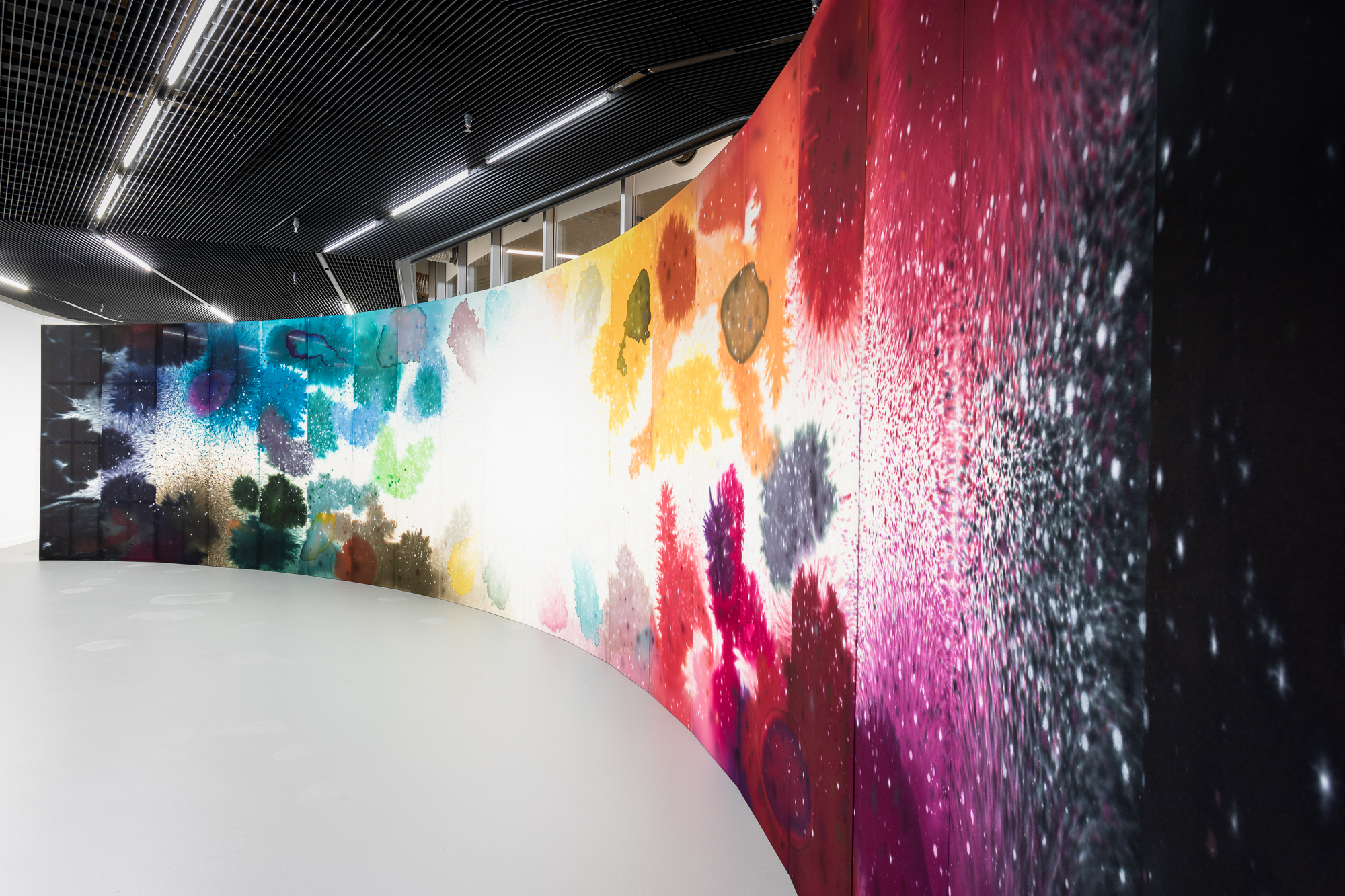

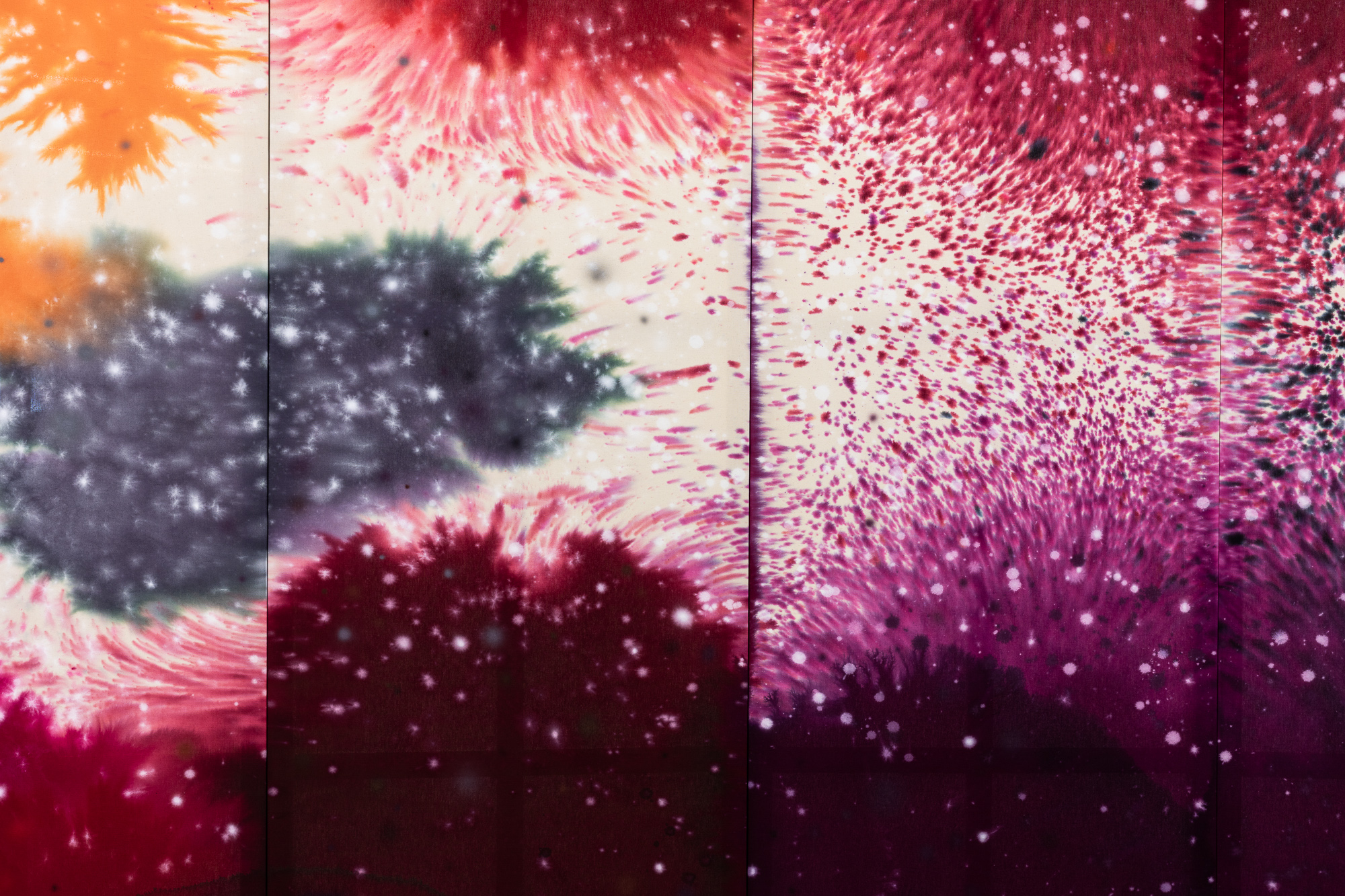
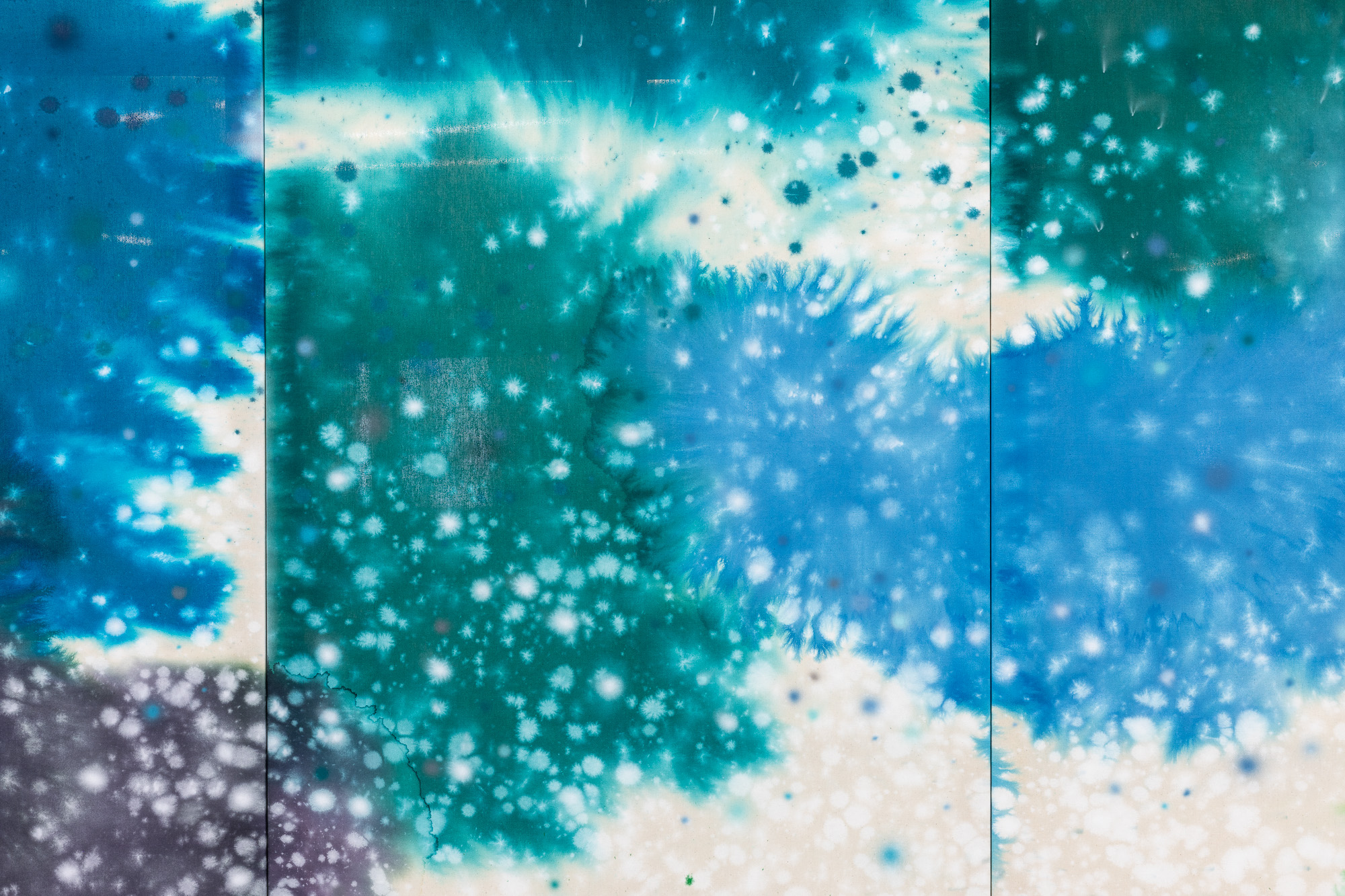
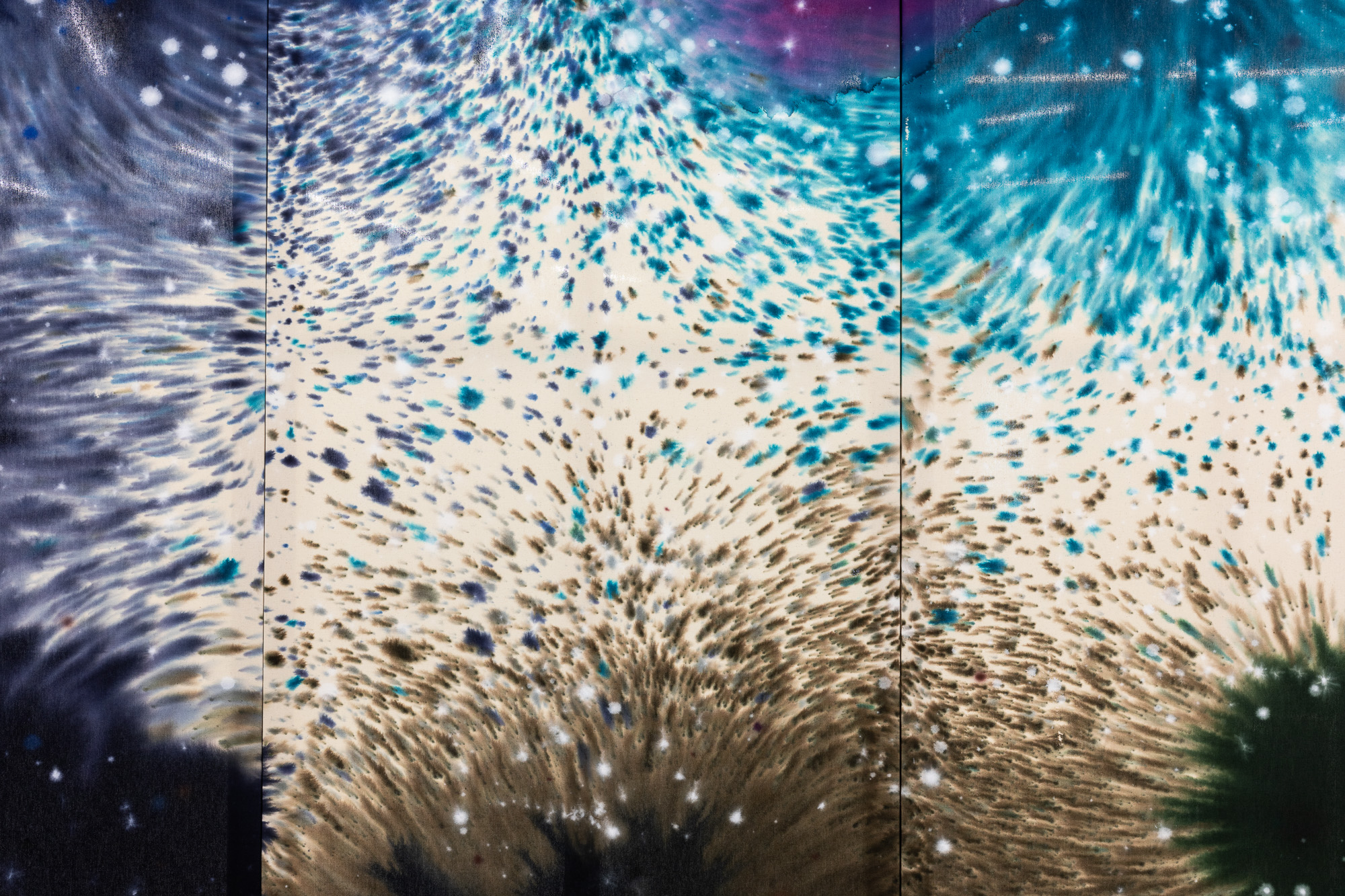
Mit einer Gegenbewegung zur vorherrschenden Architektur definiert die begehbare Installation ein komplett neues Raumgefühl, das sich je nach Blickwinkel stets zu verändern vermag. Giacomo Santiago Rogado (*1979 in Luzern) hat für die markanten Raumverhältnisse der Kunsthalle Luzern eine panoramaartige Malerei aus aneinandergereihten Leinwänden erstellt. Dabei steht die äussere Erscheinung in einer starken Wechselbeziehung zum Innern, das erst durch das Betreten des Ausstellungsraumes vollumfänglich ersichtlich wird.
In ihrer imposanten Dimension – 3m x 16m – zeigt die Installation eine farbintensive, abstrakte Malerei, die von Giacomo Santiago Rogado mit selbstentwickelten Techniken und experimentellen Malereiverfahren gefertigt wurde. Vom hellen Zentrum aus erstrecken sich symmetrisch nach links und rechts verschiedenste Farbverläufe, die sich überlagern und unterschiedliche Ebenen mit Tiefenwirkung erzeugen. Auf beide Seitenenden hin verdunkelt sich die Farbigkeit und endet in nachtschwarzen Bildbereichen. Wie ein orchestrierter Zufall wirken die wachsenden Farbeffekte, die aufgrund der Transparenz der Leinwände zwischen Sein und Schein changieren.
Die malerischen Arbeiten von Giacomo Santiago Rogado erschliessen sich nicht per se auf den ersten Blick, vielmehr bedarf es eine visuelle und kontemplative Auseinandersetzung, damit die Werke ihre expressive Wirkung entfalten können. Betrachtenden.
In ihrer imposanten Dimension – 3m x 16m – zeigt die Installation eine farbintensive, abstrakte Malerei, die von Giacomo Santiago Rogado mit selbstentwickelten Techniken und experimentellen Malereiverfahren gefertigt wurde. Vom hellen Zentrum aus erstrecken sich symmetrisch nach links und rechts verschiedenste Farbverläufe, die sich überlagern und unterschiedliche Ebenen mit Tiefenwirkung erzeugen. Auf beide Seitenenden hin verdunkelt sich die Farbigkeit und endet in nachtschwarzen Bildbereichen. Wie ein orchestrierter Zufall wirken die wachsenden Farbeffekte, die aufgrund der Transparenz der Leinwände zwischen Sein und Schein changieren.
Die malerischen Arbeiten von Giacomo Santiago Rogado erschliessen sich nicht per se auf den ersten Blick, vielmehr bedarf es eine visuelle und kontemplative Auseinandersetzung, damit die Werke ihre expressive Wirkung entfalten können. Betrachtenden.
Generell regen seine Arbeiten den individuellen Sehprozess an und beeinflussen die räumliche Wahrnehmung der Optische Illusionen erwirkt Giacomo Santiago Rogado mit den drei kleinformatigen Malereien aus der Serie «Coalescence», die sich als minimale Setzungen im Hauptraum gegenüber der monumentalen Installation behaupten. Von der Ferne wirken die drei Arbeiten mehr oder weniger einfarbig, wobei sich die geschwungenen Linien mit ihrem Zentrum erst bei näherem Betrachten erschliessen. Ein kontrollierter, meditativer Malereiprozess mit Acryl und Öl ergibt eine dynamisch-wellige Struktur in Kreisformat, deren Farbigkeit sich beim Vorbeigehen stetig verändert.
Im Kabinett der Kunsthalle Luzern zeigt Giacomo Santiago Rogado eine Auswahl gerahmter, kleinformatiger Papierarbeiten. In einer dichten, gleichmässigen Aneinanderreihung werden verschiedene Varianten seines Umgangs mit Farben, Formen und Strukturen sichtbar. Die Papierarbeiten fungieren wie ein Mind-Map, welches die Spannbreite seines technischen Schaffens aufzeigt und die Weiterentwicklung von Forschung und Formfindung dokumentiert. Es handelt sich um eigenständige Arbeiten, worin sich seine selbst entwickelten Techniken vermischen und neuartige Malerei-Kombinationen generieren.
Michael Sutter
Im Kabinett der Kunsthalle Luzern zeigt Giacomo Santiago Rogado eine Auswahl gerahmter, kleinformatiger Papierarbeiten. In einer dichten, gleichmässigen Aneinanderreihung werden verschiedene Varianten seines Umgangs mit Farben, Formen und Strukturen sichtbar. Die Papierarbeiten fungieren wie ein Mind-Map, welches die Spannbreite seines technischen Schaffens aufzeigt und die Weiterentwicklung von Forschung und Formfindung dokumentiert. Es handelt sich um eigenständige Arbeiten, worin sich seine selbst entwickelten Techniken vermischen und neuartige Malerei-Kombinationen generieren.
Michael Sutter
2021
Kopf Herz Bauch
Solo show
Galerie Mark Müller
Galerie Mark Müller
4/24 – 6/5/21
Zürich
Zürich
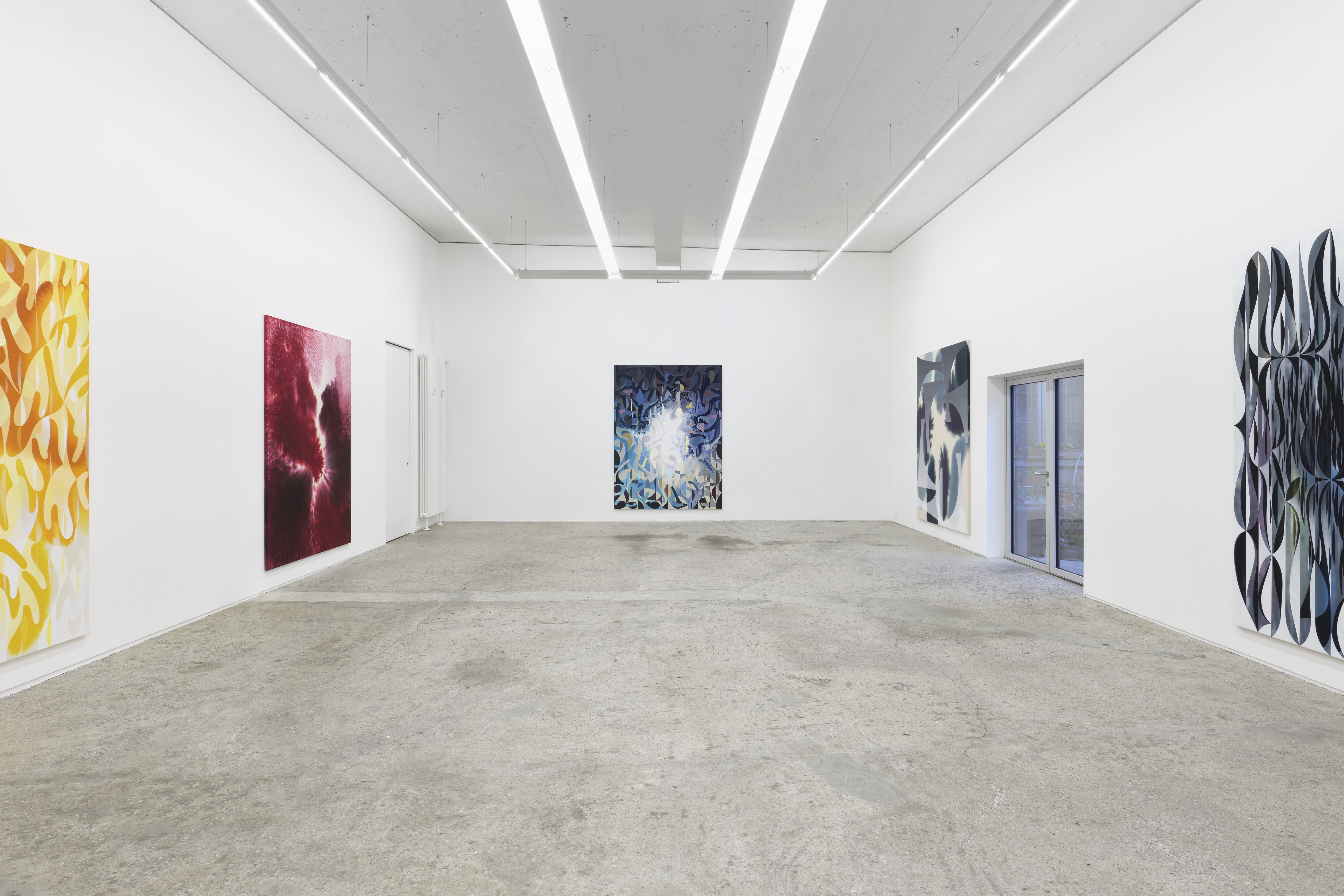
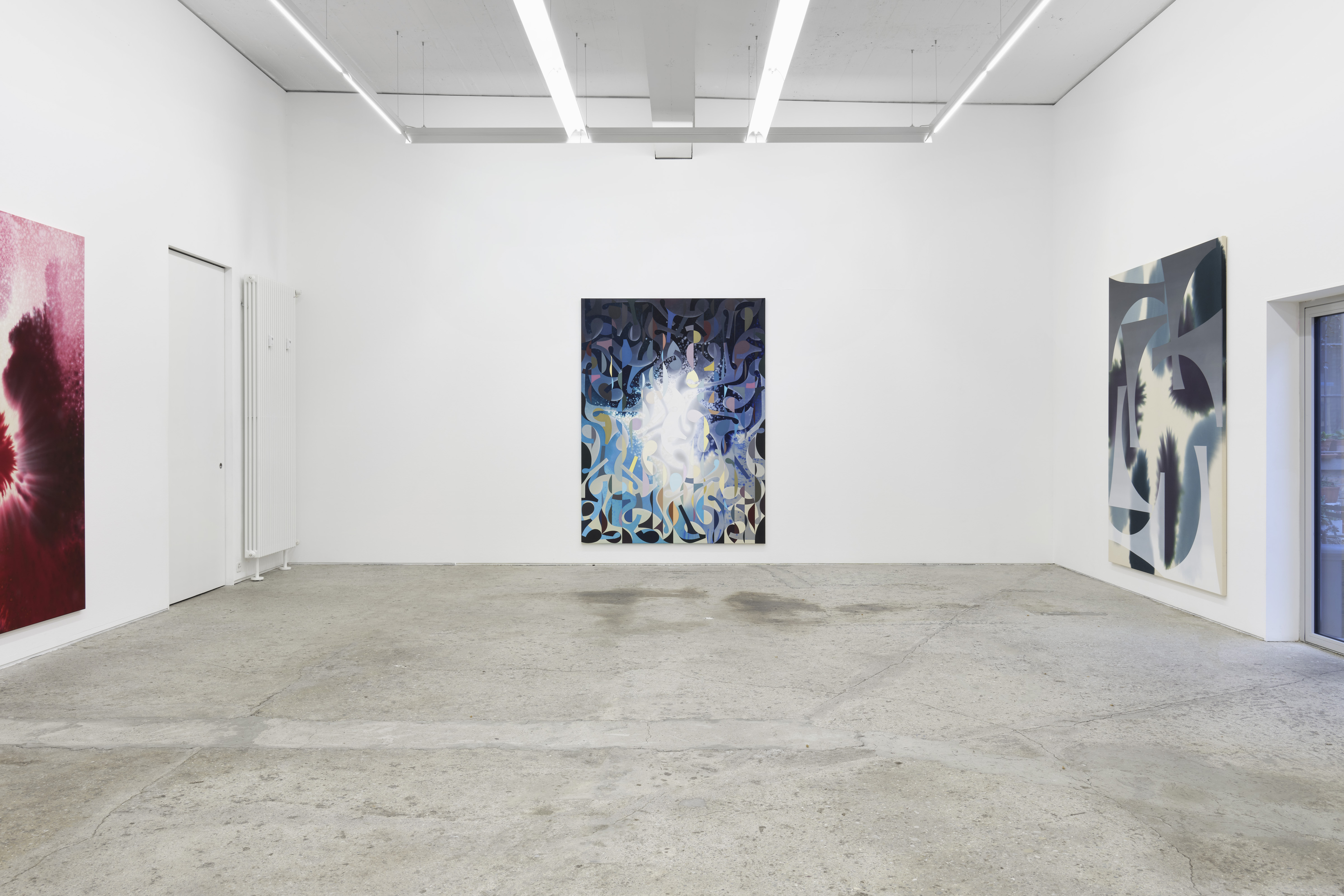
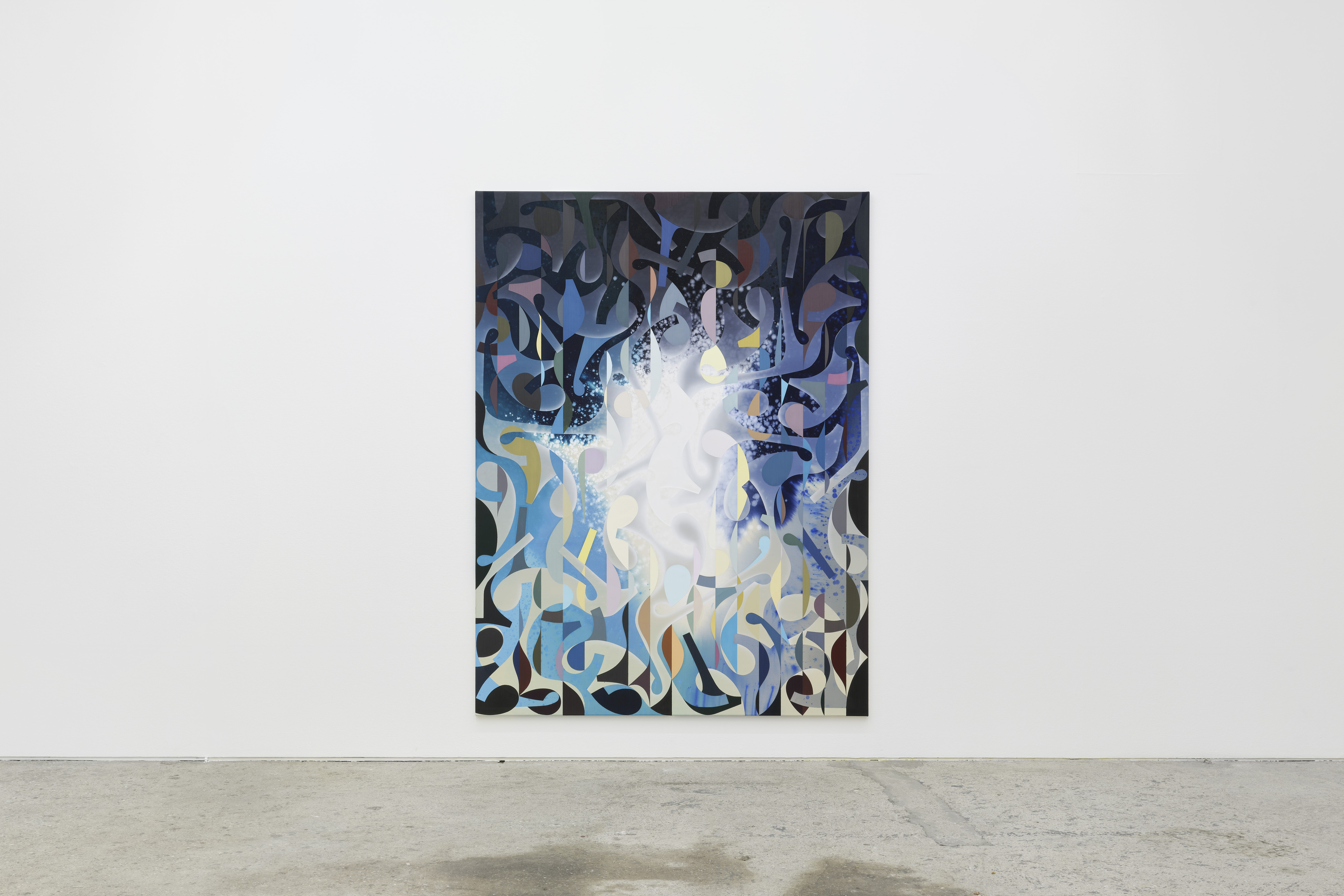
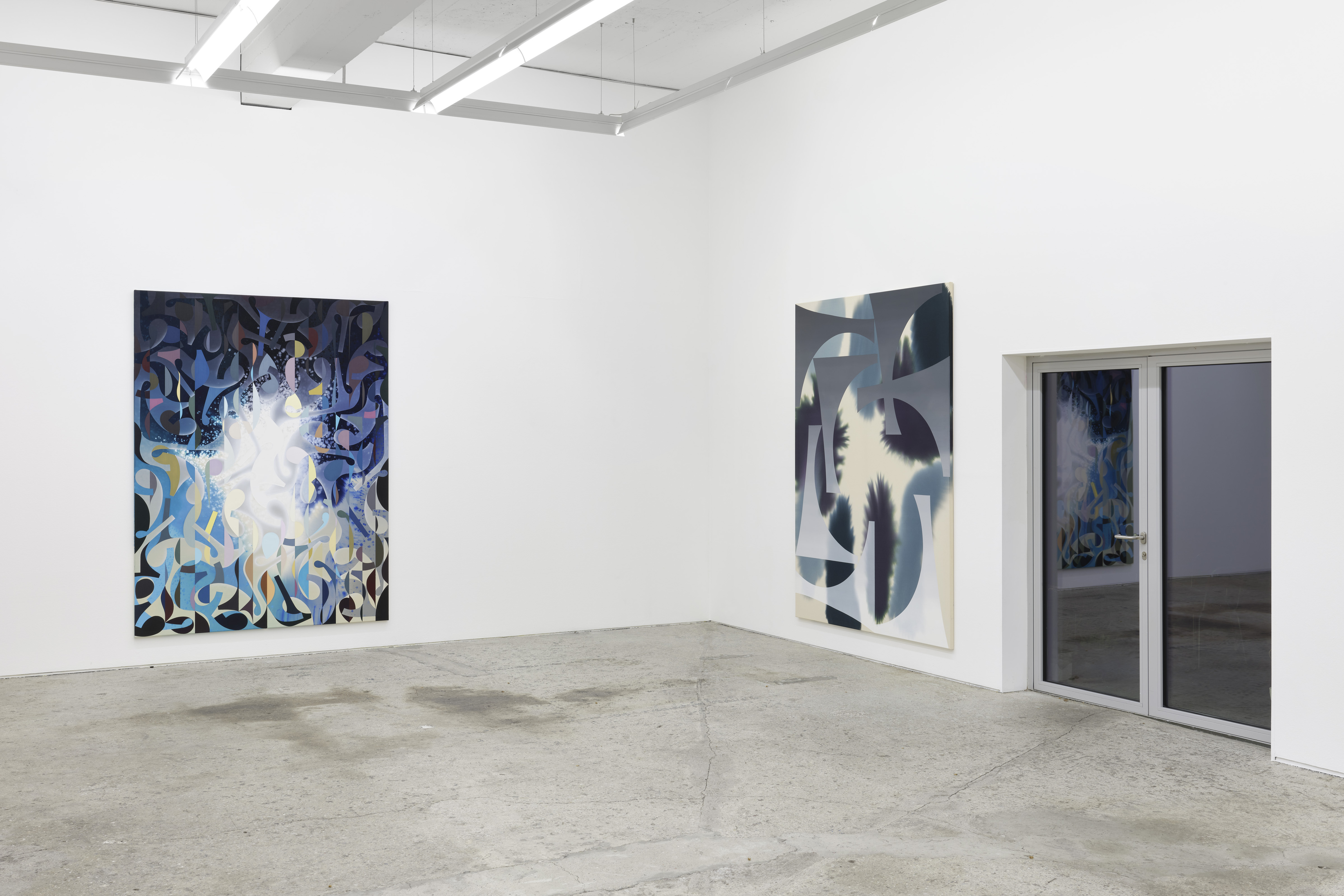
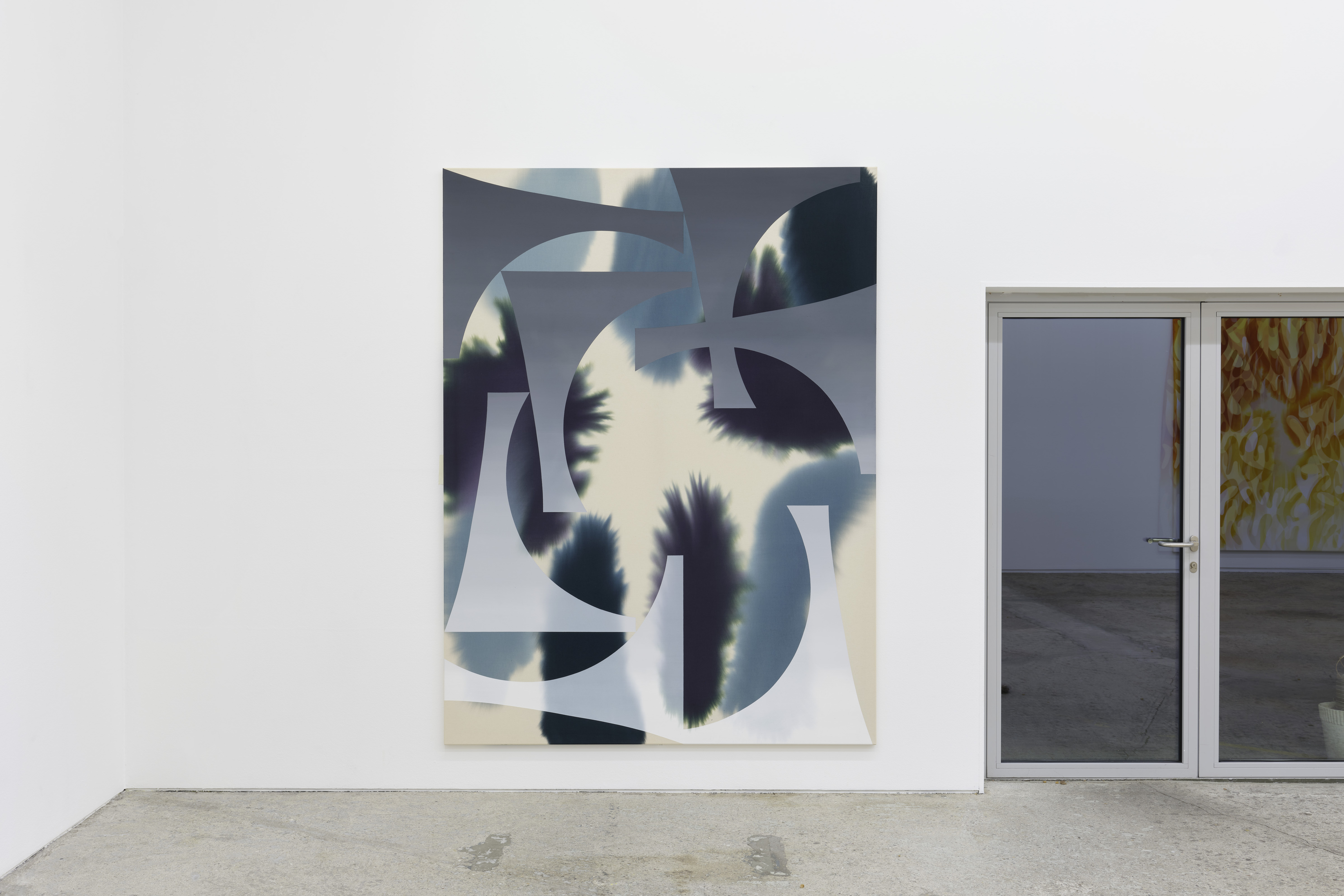
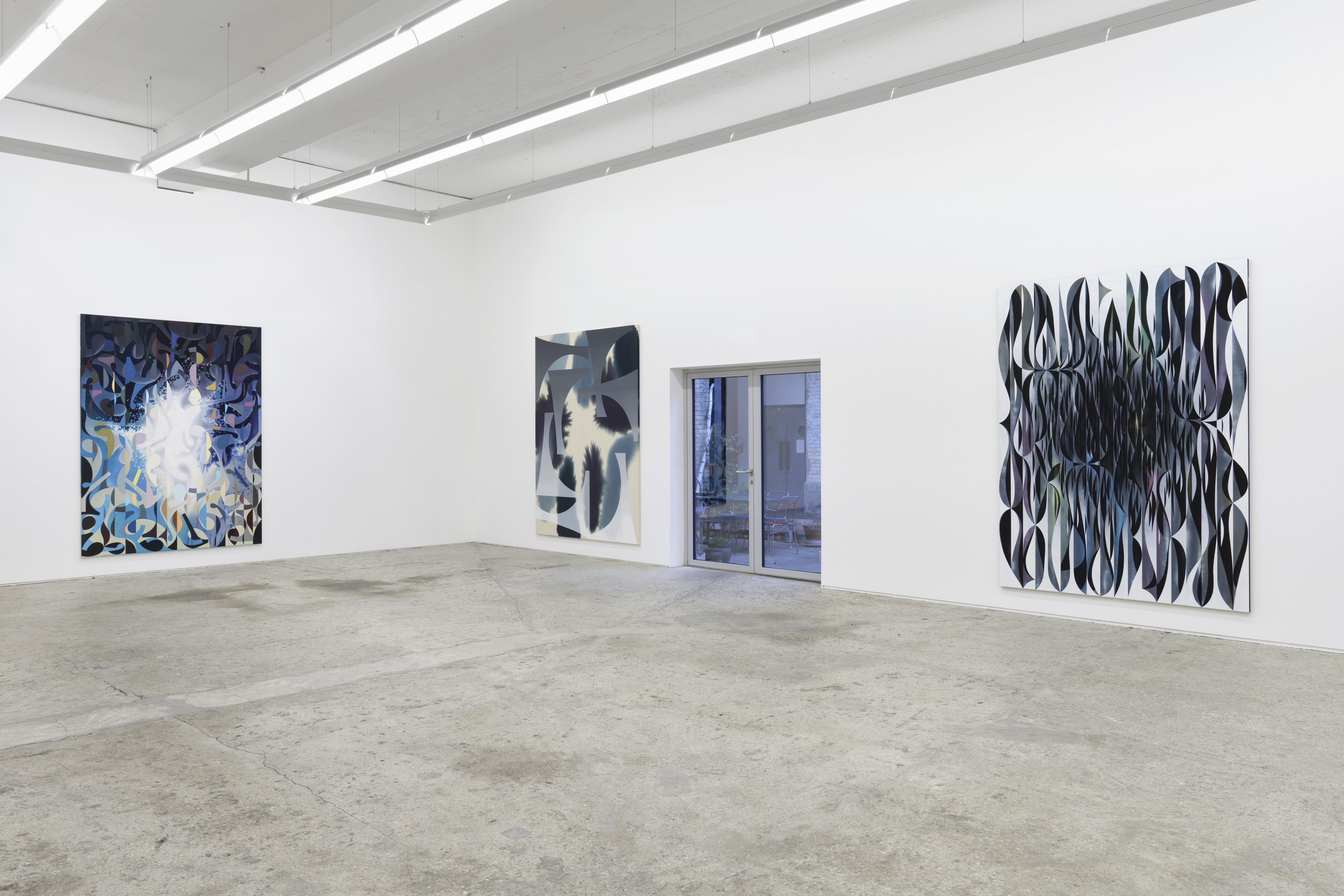
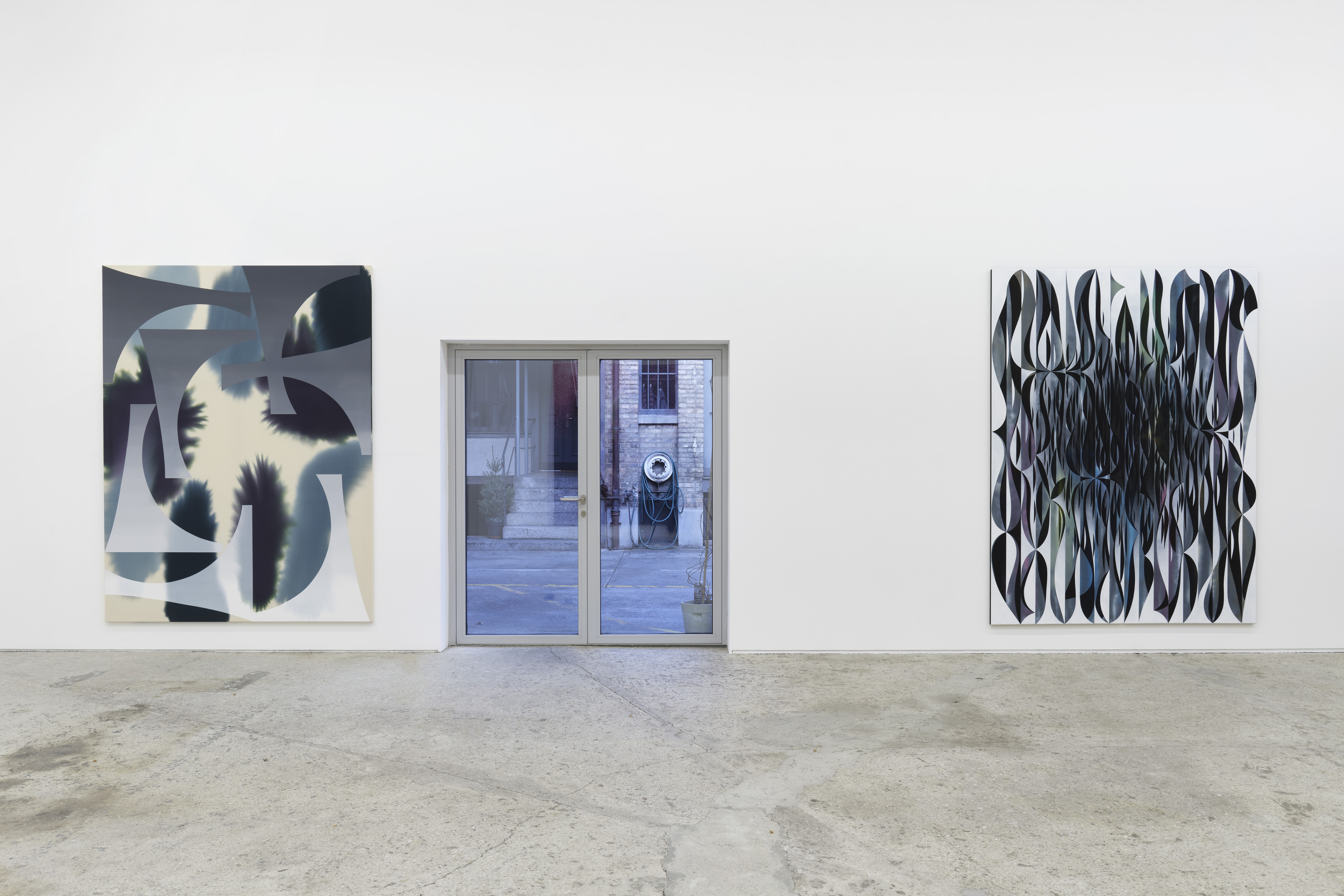
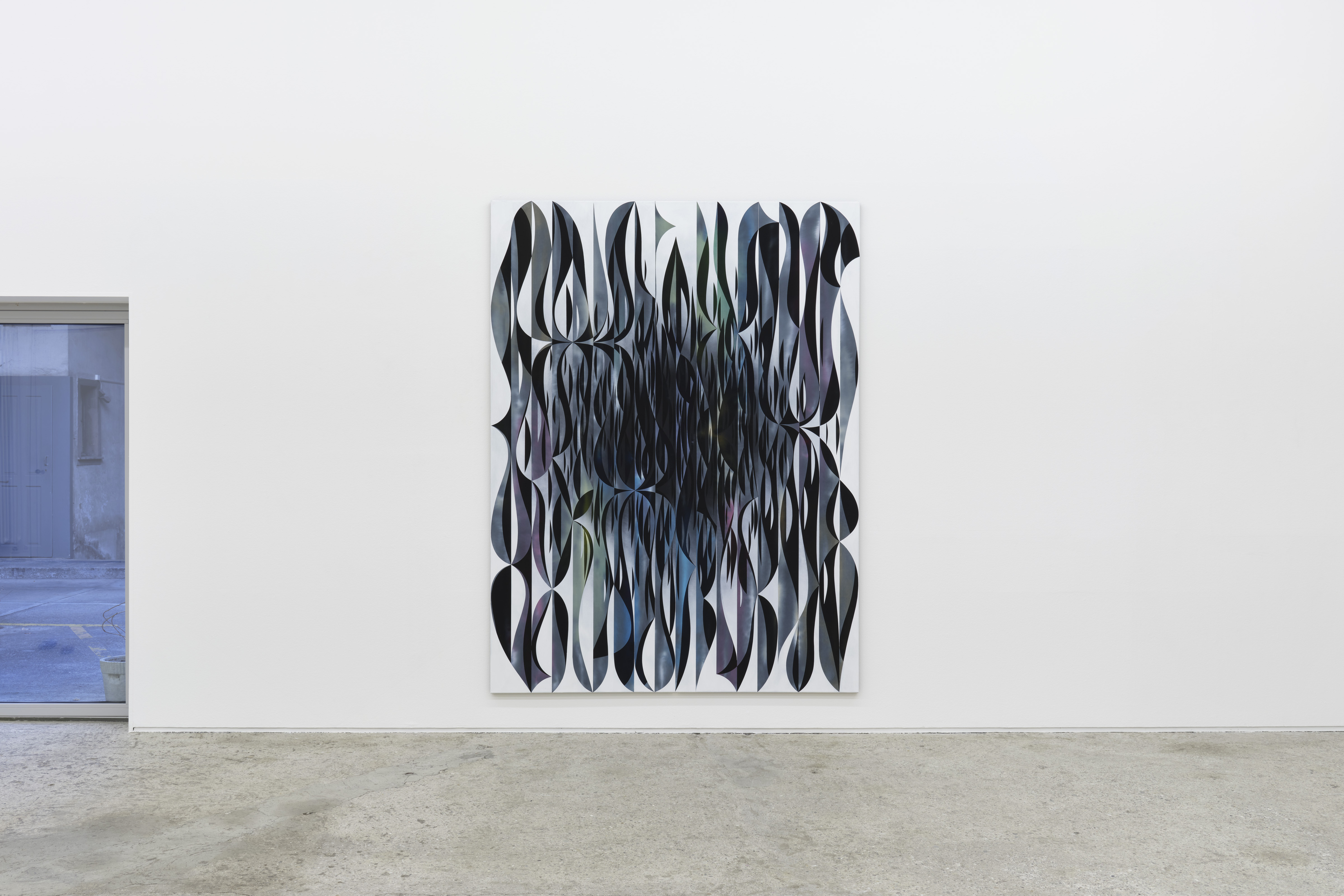
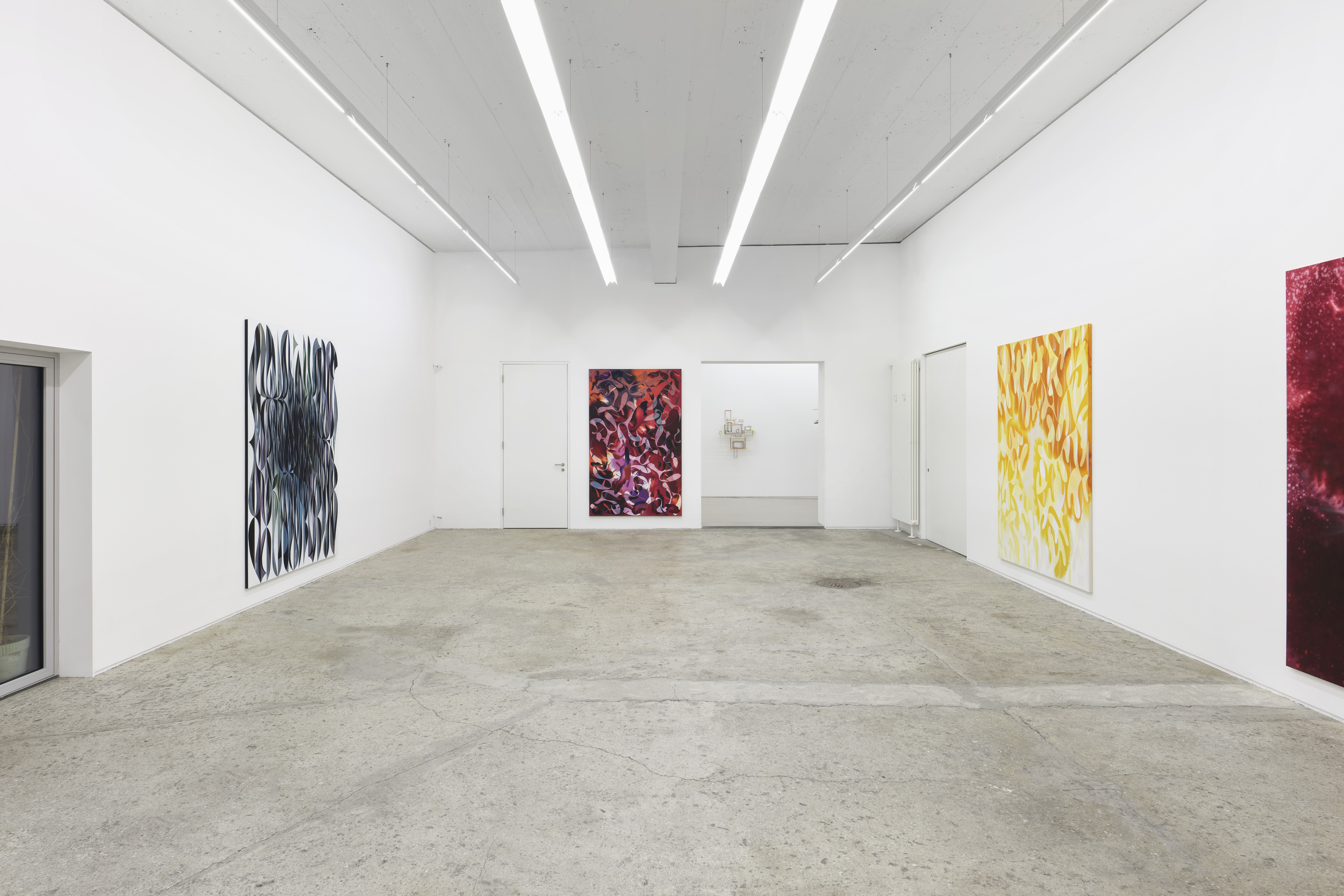
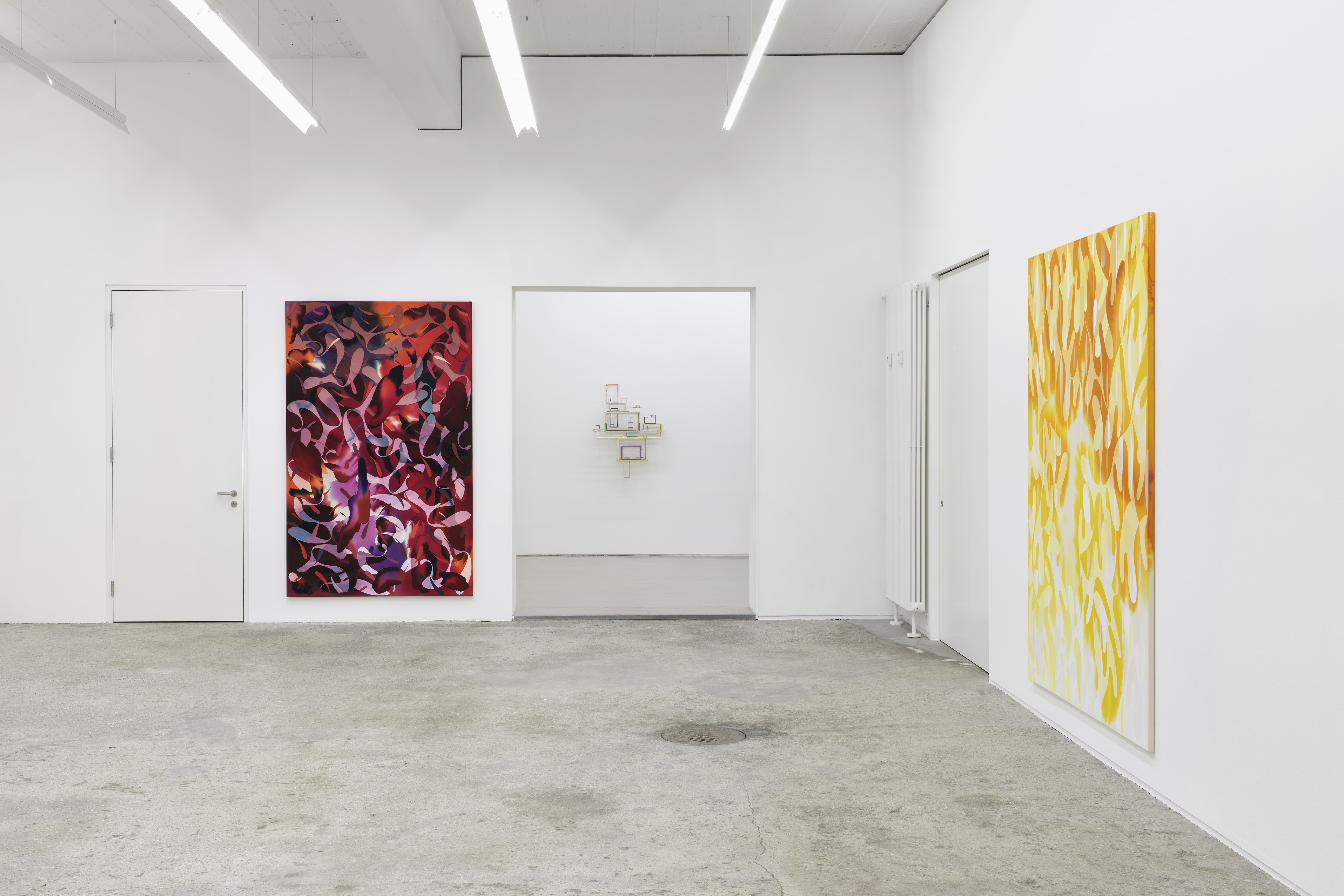
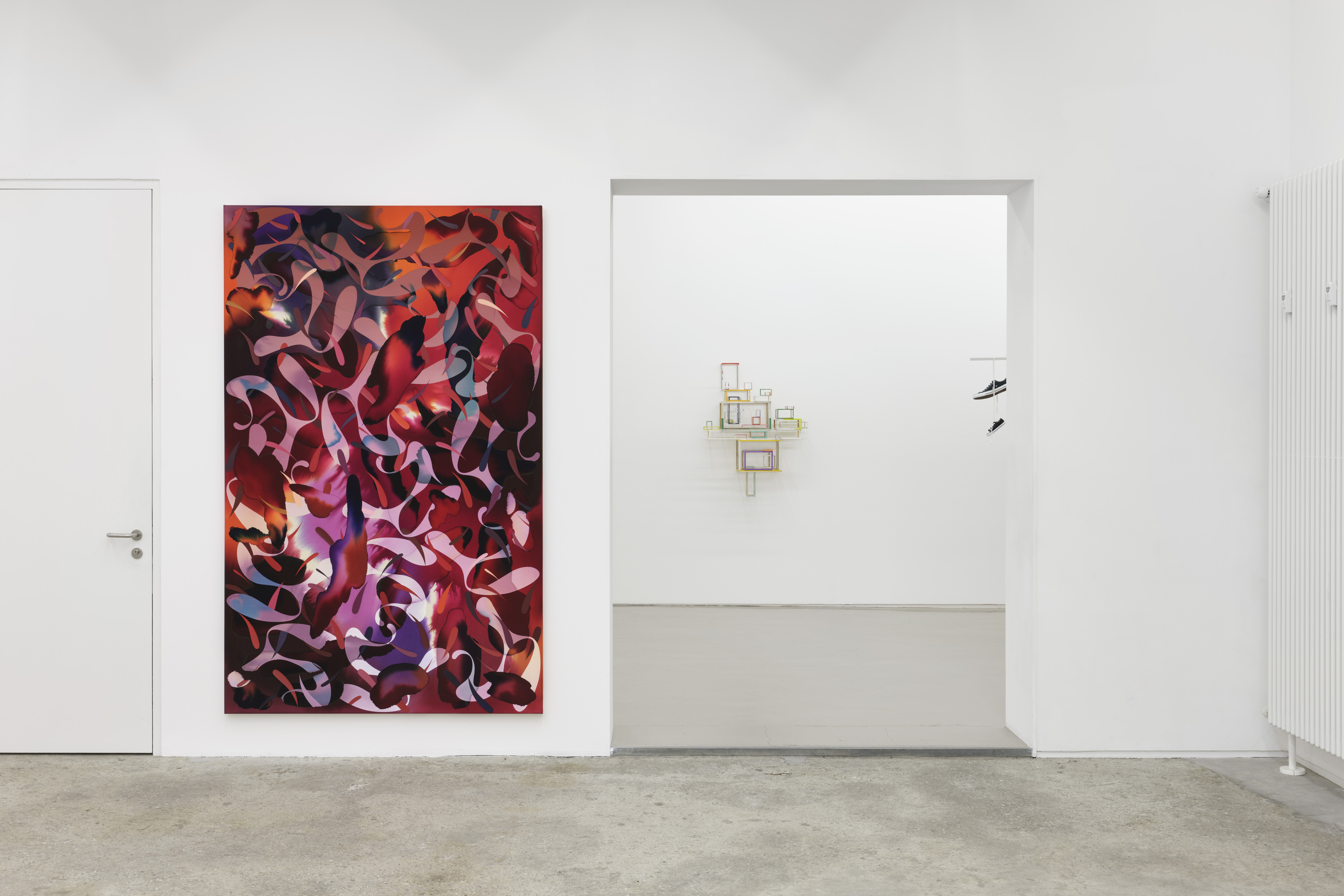
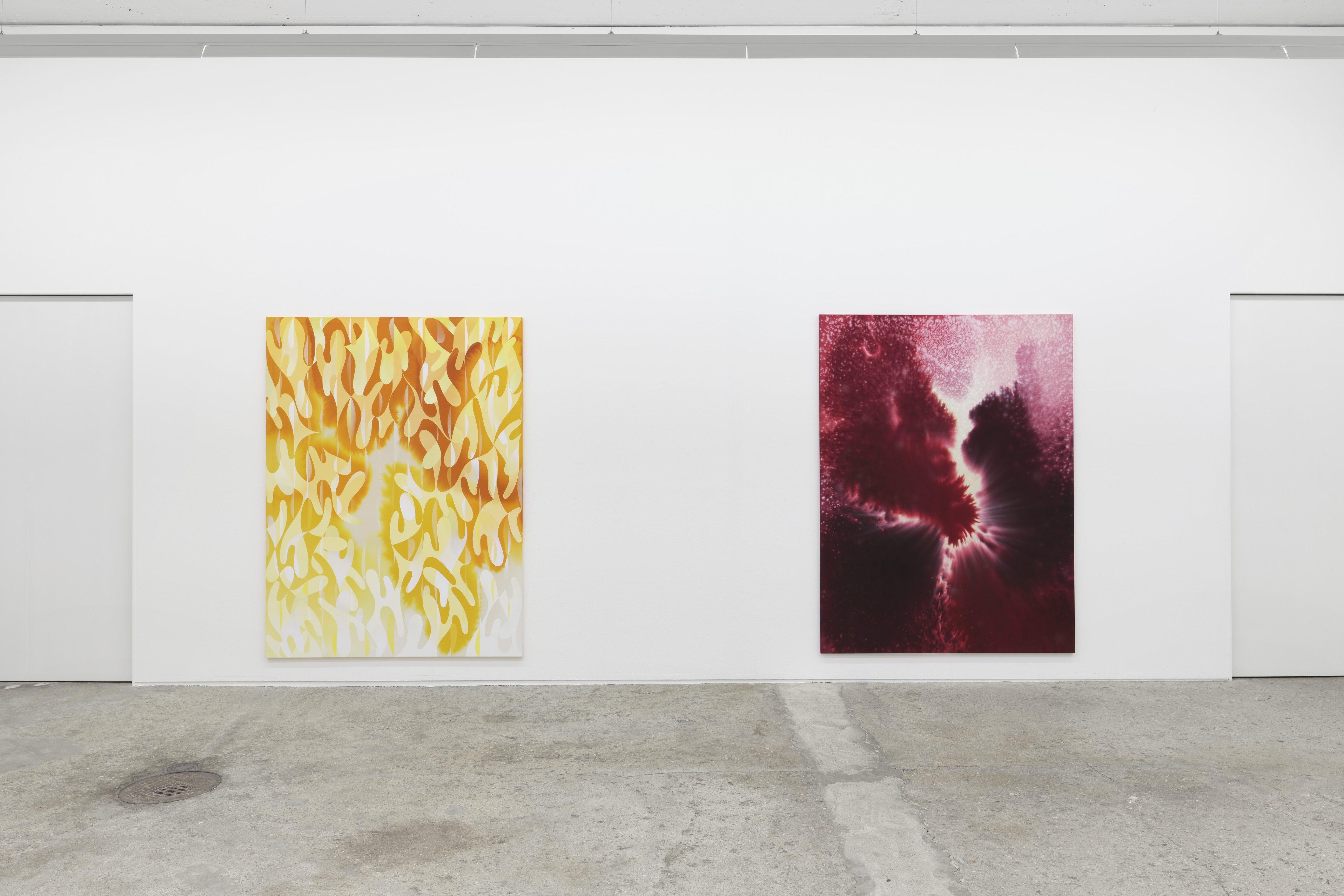
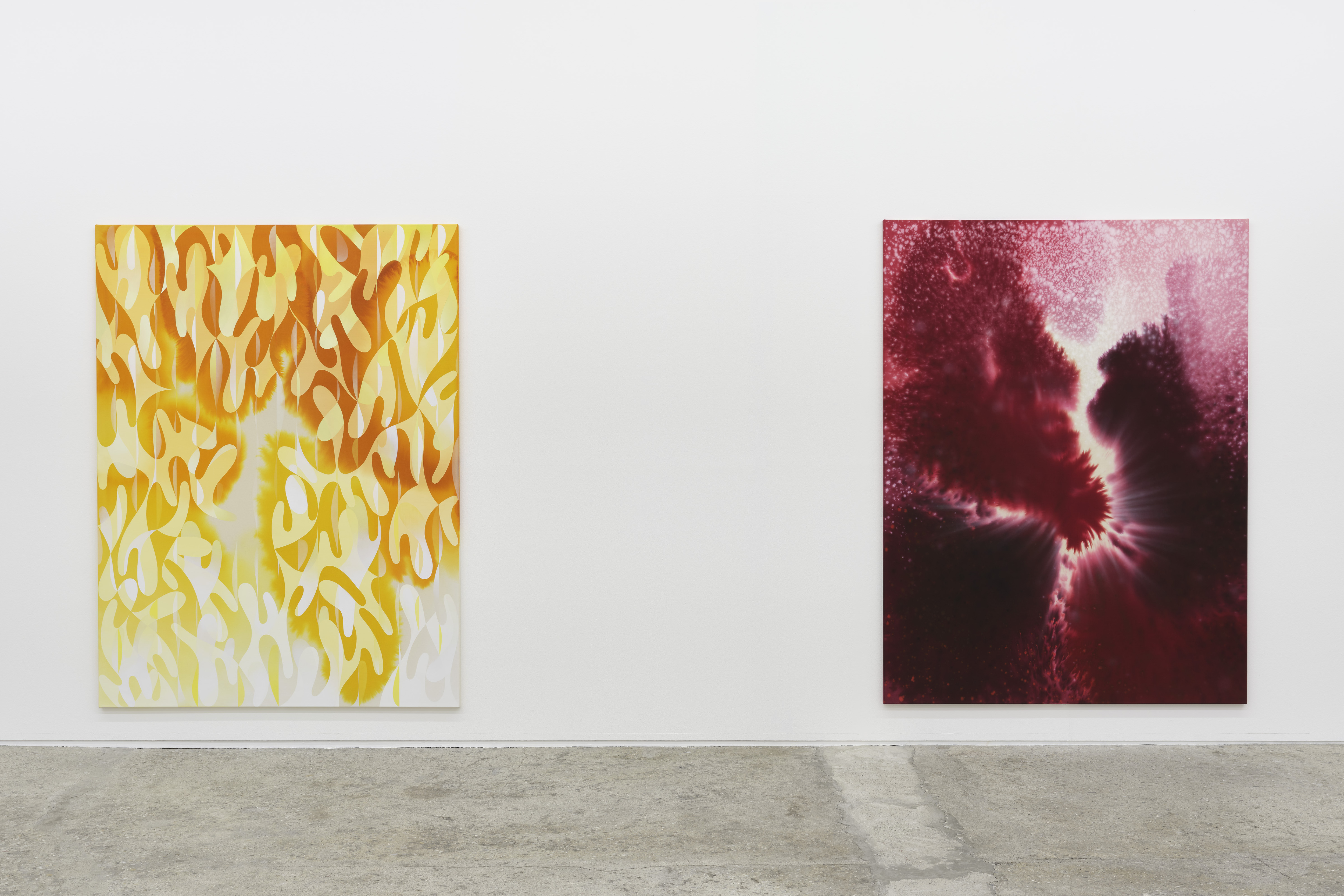
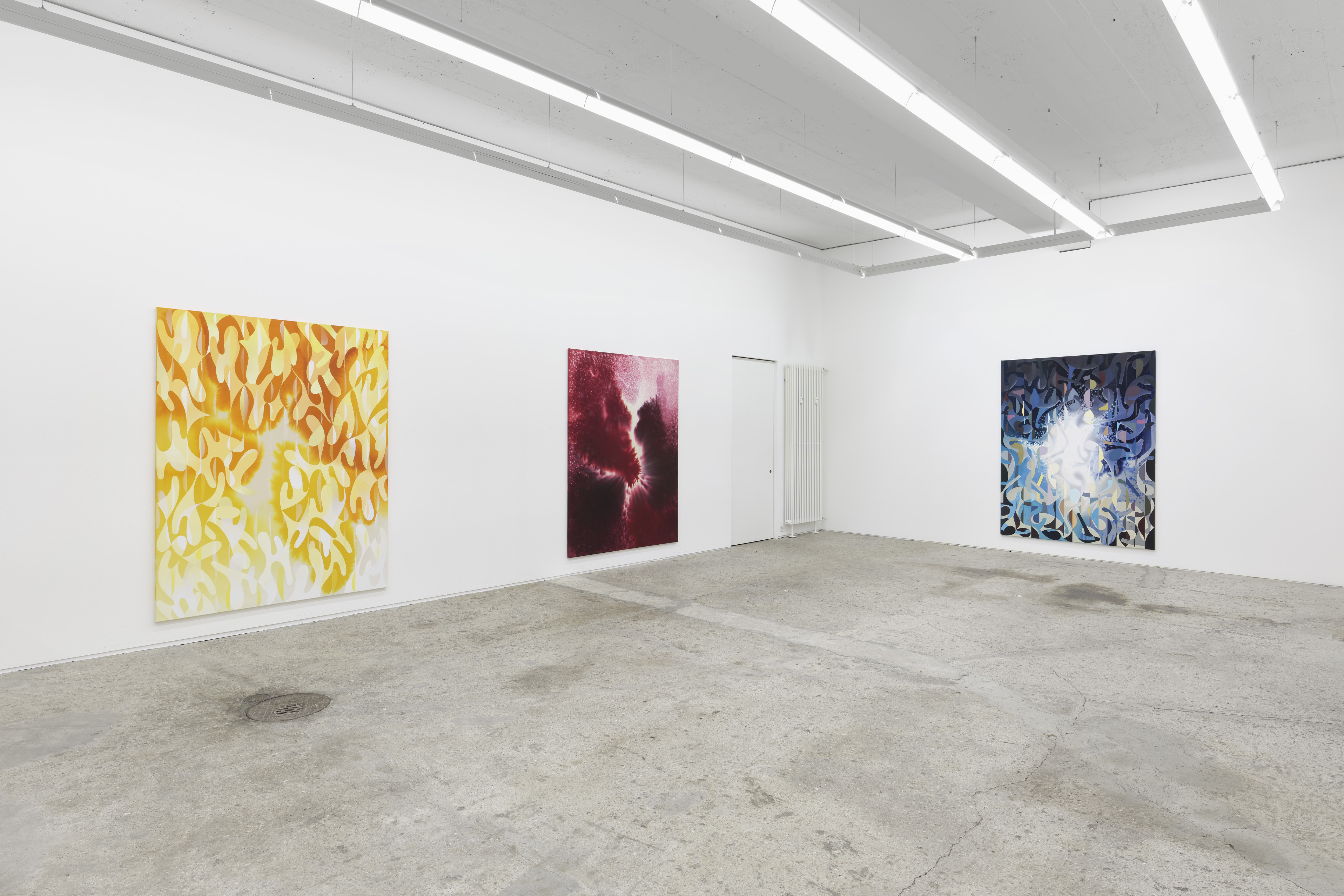
«The artist must prophesy not in the sense that he foretells things to come, but in the sense that he tells his audience, at risk of their displeasure,
the secrets of their own hearts.»
— Robin G. Collingwood
In his 1938 work The Principles of Art, British philosopher, metaphysician, and archaeologist Robin G. Collingwood described the communication of emotion as art’s central task. Art, according to Collingwood, is ultimately an imaginary expression of feelings. From today’s point of view, this statement is not only an overgeneralization and insufficiently explanatory, it also does not apply to all existing art forms. But Collingwood’s theory is revealing because it explains how the power of imagination enables us to communicate feelings in the form of pictures. As a mediating authority between the visual world and reality, it is possible for artworks to reproduce emotion and affect on both levels, to reflect on them and to trigger them.
The works of Giacomo Santiago Rogado also lie between emotional expression and exchange. The exhibition “Kopf Herz Bauch” (Head Heart Gut) shows large and small format paintings by the Swiss artist with Spanish-Italian roots that are intense in their use of color and illustrate the chosen exhibition title in a wide variety of ways. The title refers to three levels of the body that each designate foundational, human qualities: head, heart, and gut are tied to terms like rationality, affect, and intuition. They label essential characteristics and sensibilities that are part of Rogado’s artistic process and the intense visual impact of his works.
Rogado’s mixing technique is based on a system all its own that results from phases that build up on one another. This process-oriented technique is clearly traceable, for in their direct comparison the works reveal their various stages and layers. The crimson red paint in the work Quelle (Source, 2020) shows Rogado’s approach to the untreated visual support. With “chemical intuition,” he lets the spanned cotton be taken by the own will of the paints themselves. The works in the series Accord (2020) show the enormous spectrum of possibilities that builds on the first phase of treatment. By way of stencils, formal fragments are applied with the greatest precision and regularity, condensing the visual surface and reorganizing it. While Accord 7 repeats the same geometric figure with shades of blue-white, the wave shapes arranged vertically in Accord 8 seem to almost to multiply infinitely.
the secrets of their own hearts.»
— Robin G. Collingwood
In his 1938 work The Principles of Art, British philosopher, metaphysician, and archaeologist Robin G. Collingwood described the communication of emotion as art’s central task. Art, according to Collingwood, is ultimately an imaginary expression of feelings. From today’s point of view, this statement is not only an overgeneralization and insufficiently explanatory, it also does not apply to all existing art forms. But Collingwood’s theory is revealing because it explains how the power of imagination enables us to communicate feelings in the form of pictures. As a mediating authority between the visual world and reality, it is possible for artworks to reproduce emotion and affect on both levels, to reflect on them and to trigger them.
The works of Giacomo Santiago Rogado also lie between emotional expression and exchange. The exhibition “Kopf Herz Bauch” (Head Heart Gut) shows large and small format paintings by the Swiss artist with Spanish-Italian roots that are intense in their use of color and illustrate the chosen exhibition title in a wide variety of ways. The title refers to three levels of the body that each designate foundational, human qualities: head, heart, and gut are tied to terms like rationality, affect, and intuition. They label essential characteristics and sensibilities that are part of Rogado’s artistic process and the intense visual impact of his works.
Rogado’s mixing technique is based on a system all its own that results from phases that build up on one another. This process-oriented technique is clearly traceable, for in their direct comparison the works reveal their various stages and layers. The crimson red paint in the work Quelle (Source, 2020) shows Rogado’s approach to the untreated visual support. With “chemical intuition,” he lets the spanned cotton be taken by the own will of the paints themselves. The works in the series Accord (2020) show the enormous spectrum of possibilities that builds on the first phase of treatment. By way of stencils, formal fragments are applied with the greatest precision and regularity, condensing the visual surface and reorganizing it. While Accord 7 repeats the same geometric figure with shades of blue-white, the wave shapes arranged vertically in Accord 8 seem to almost to multiply infinitely.
The works pursue an autopoietic system where different phases remain recognizable due to their independence. But Rogado uses technique, paint, and form in a direct dialogue with one another, a dialogue that results quite intuitively for the artist, but then again vacillates between rational and emotional decisions. The works become an emblem of Rogado’s process and, as it were, mirror the artist himself.
In addition to characterizing the artist’s way of working, the terms head, heart, and gut also say something about the impact of the works. The artist works in the mode of painting, but his works are decidedly unlike paintings in the classical sense. Rogado’s paintings are ambiguous, they do not try to make the real world available to experience on a visual support. There are no fixed criteria of reference, nor is there a defined narrative. The works might seem unapproachable at first, but they are not reticent: instead, they open a space of possibilities in which the picture and the beholder can engage with one another. In this way, the works address the context of painting: they take up the theme of the window as a painterly metaphor and provide a view of something that is found beyond the given visual surface.
Rogado’s paintings are portals in a moment in which standstill and inexorable movement are not mutually exclusive. Often, there is a central point in the picture that captures the searching gaze, slowing it, drawing it inside the picture. In this way, the artist makes a counter proposal to today’s often fleeting visual habits and fixed directions of reading. At the same time, he challenges our longing for explanation and immediacy. A work like Grasp (2020), so filled with shapes and colors (and tellingly created at the start of the first lockdown in the artist’s Berlin studio), is not about being able to reconstruct its visual order. We should allow ourselves to interact the work and explore ourselves as well, as Rogado recently explained in a conversation. “Engaging with my works always means exploring yourself as well. I don’t tell stories or present a strict concept that is easily traced out, but provide a possibility of learning something about yourself.”
The result is a reciprocal relationship between the picture and the beholder: an in- between, or rather a vacuum in which the world slows and other physical laws apply. Though a kaleidoscope of emotions, the gaze is released for the interior of the work, the artist, and ourselves. Quite in Collingwood’s sense, Giacomo Santiago Rogado does not predict the future, but gives viewers an opportunity to reflect on their own feelings in the here and now. Here, we not only listen to our heart, but also to our head and our gut.
Marlene Bürgi
In addition to characterizing the artist’s way of working, the terms head, heart, and gut also say something about the impact of the works. The artist works in the mode of painting, but his works are decidedly unlike paintings in the classical sense. Rogado’s paintings are ambiguous, they do not try to make the real world available to experience on a visual support. There are no fixed criteria of reference, nor is there a defined narrative. The works might seem unapproachable at first, but they are not reticent: instead, they open a space of possibilities in which the picture and the beholder can engage with one another. In this way, the works address the context of painting: they take up the theme of the window as a painterly metaphor and provide a view of something that is found beyond the given visual surface.
Rogado’s paintings are portals in a moment in which standstill and inexorable movement are not mutually exclusive. Often, there is a central point in the picture that captures the searching gaze, slowing it, drawing it inside the picture. In this way, the artist makes a counter proposal to today’s often fleeting visual habits and fixed directions of reading. At the same time, he challenges our longing for explanation and immediacy. A work like Grasp (2020), so filled with shapes and colors (and tellingly created at the start of the first lockdown in the artist’s Berlin studio), is not about being able to reconstruct its visual order. We should allow ourselves to interact the work and explore ourselves as well, as Rogado recently explained in a conversation. “Engaging with my works always means exploring yourself as well. I don’t tell stories or present a strict concept that is easily traced out, but provide a possibility of learning something about yourself.”
The result is a reciprocal relationship between the picture and the beholder: an in- between, or rather a vacuum in which the world slows and other physical laws apply. Though a kaleidoscope of emotions, the gaze is released for the interior of the work, the artist, and ourselves. Quite in Collingwood’s sense, Giacomo Santiago Rogado does not predict the future, but gives viewers an opportunity to reflect on their own feelings in the here and now. Here, we not only listen to our heart, but also to our head and our gut.
Marlene Bürgi
2021
Anfang von etwas
Book
Städtische Galerie
Städtische Galerie
Germany
Delmenhorst
Delmenhorst
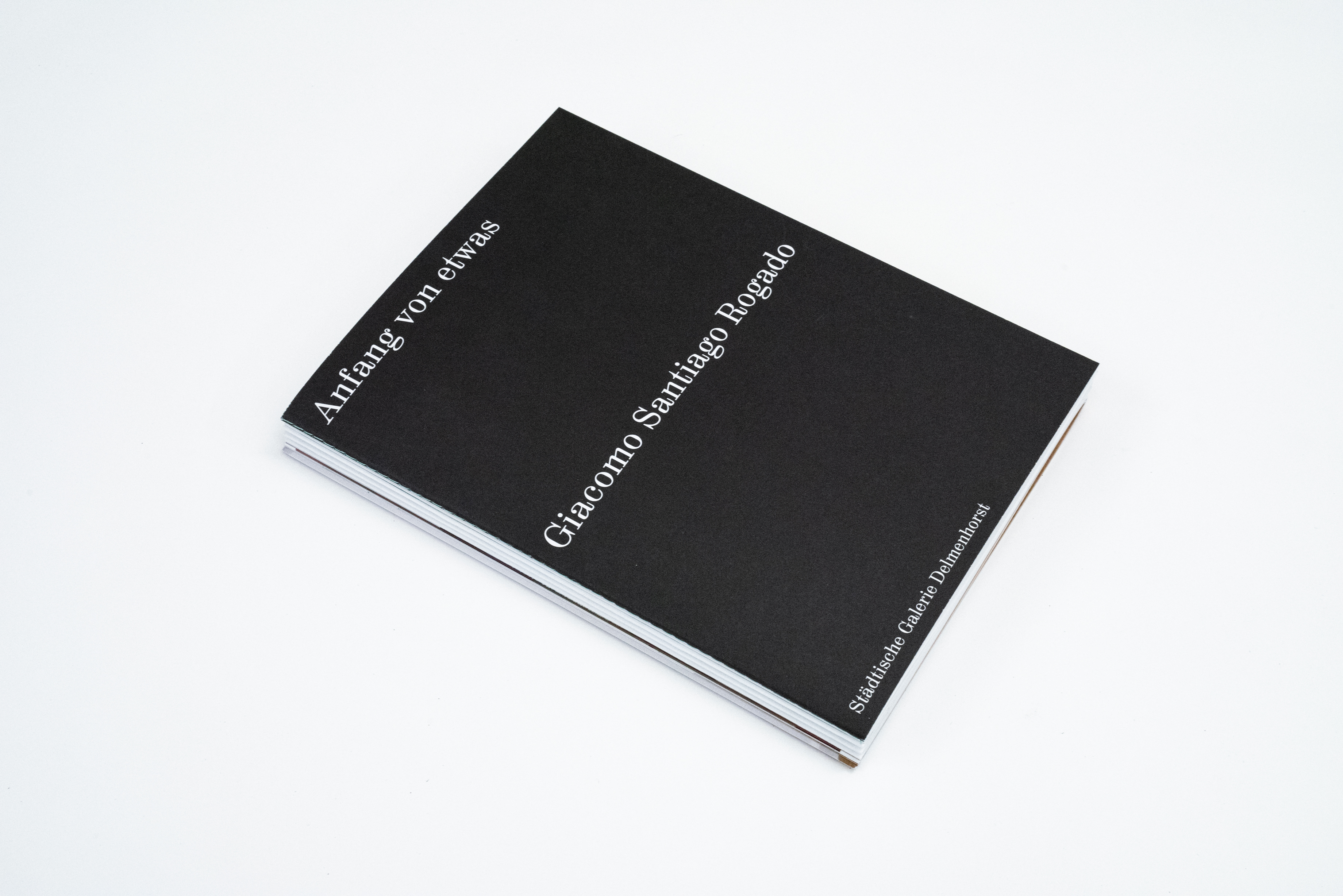
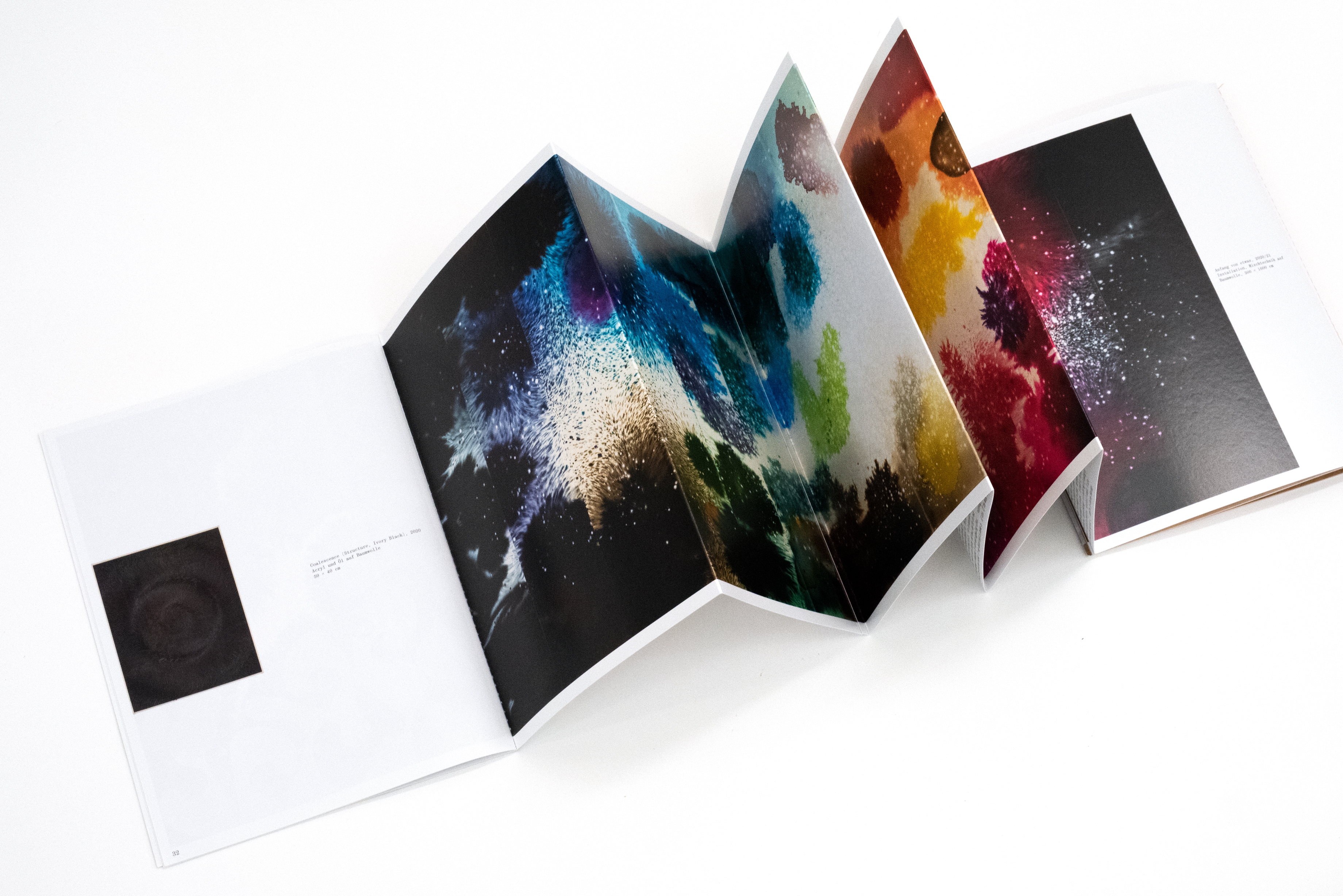
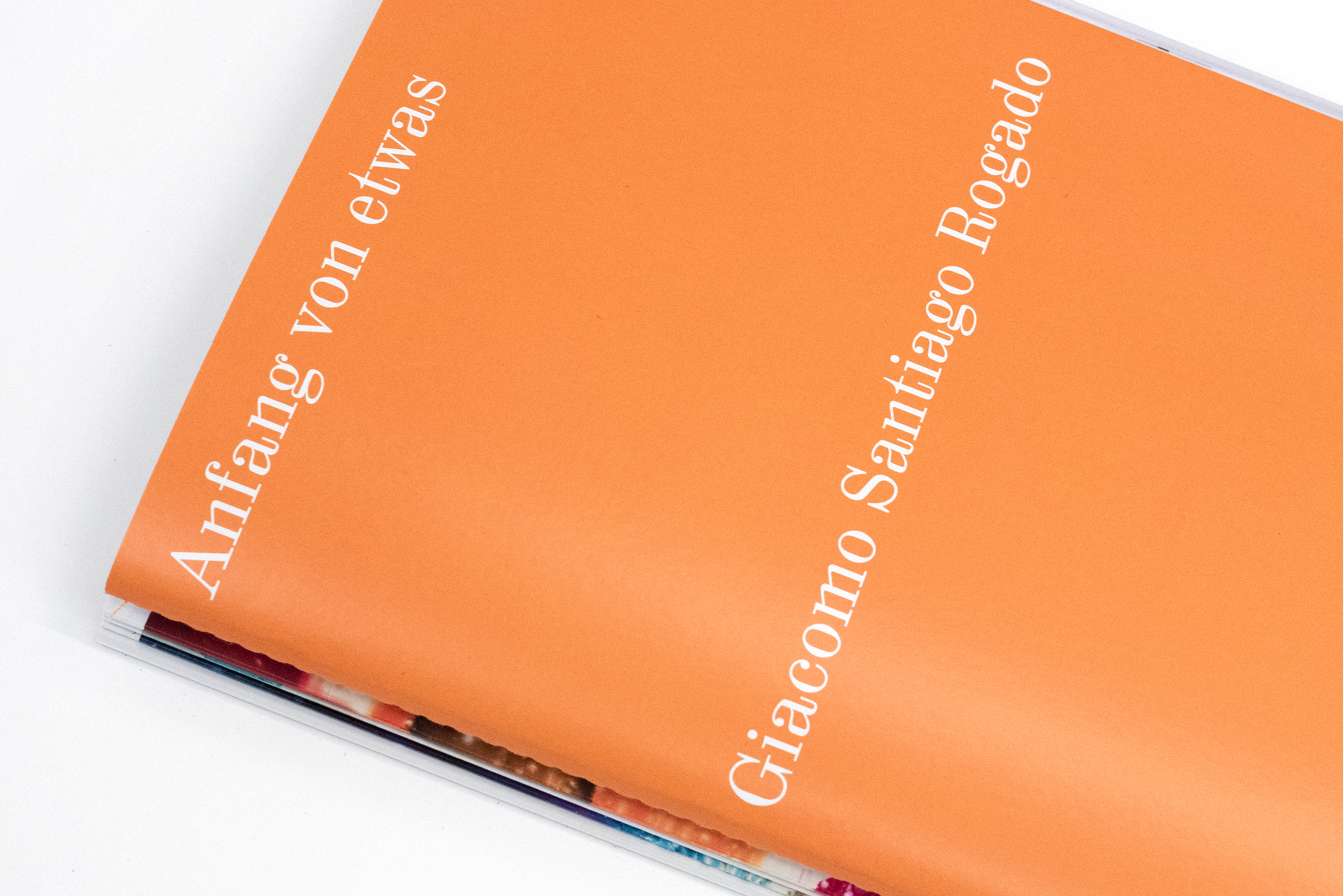
Texts by Annett Reckert
Concept and graphic design by Studio Amanda Haas
Published by Städtische Galerie Delmenhorst
Concept and graphic design by Studio Amanda Haas
Published by Städtische Galerie Delmenhorst
2021
Anfang von etwas
Solo show
Städtische Galerie
Städtische Galerie
30/1/21 – 28/3/21
Delmenhorst
Delmenhorst

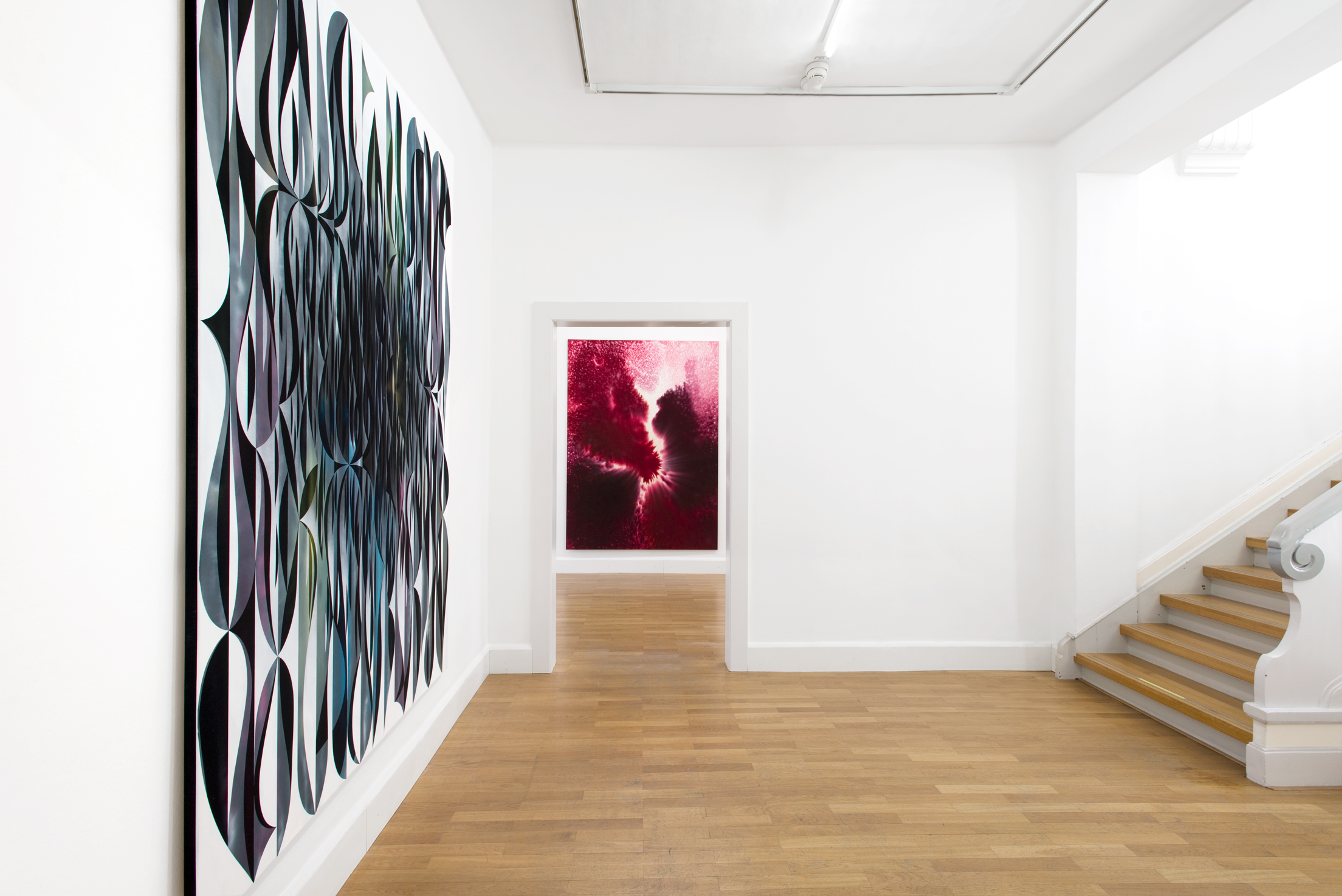


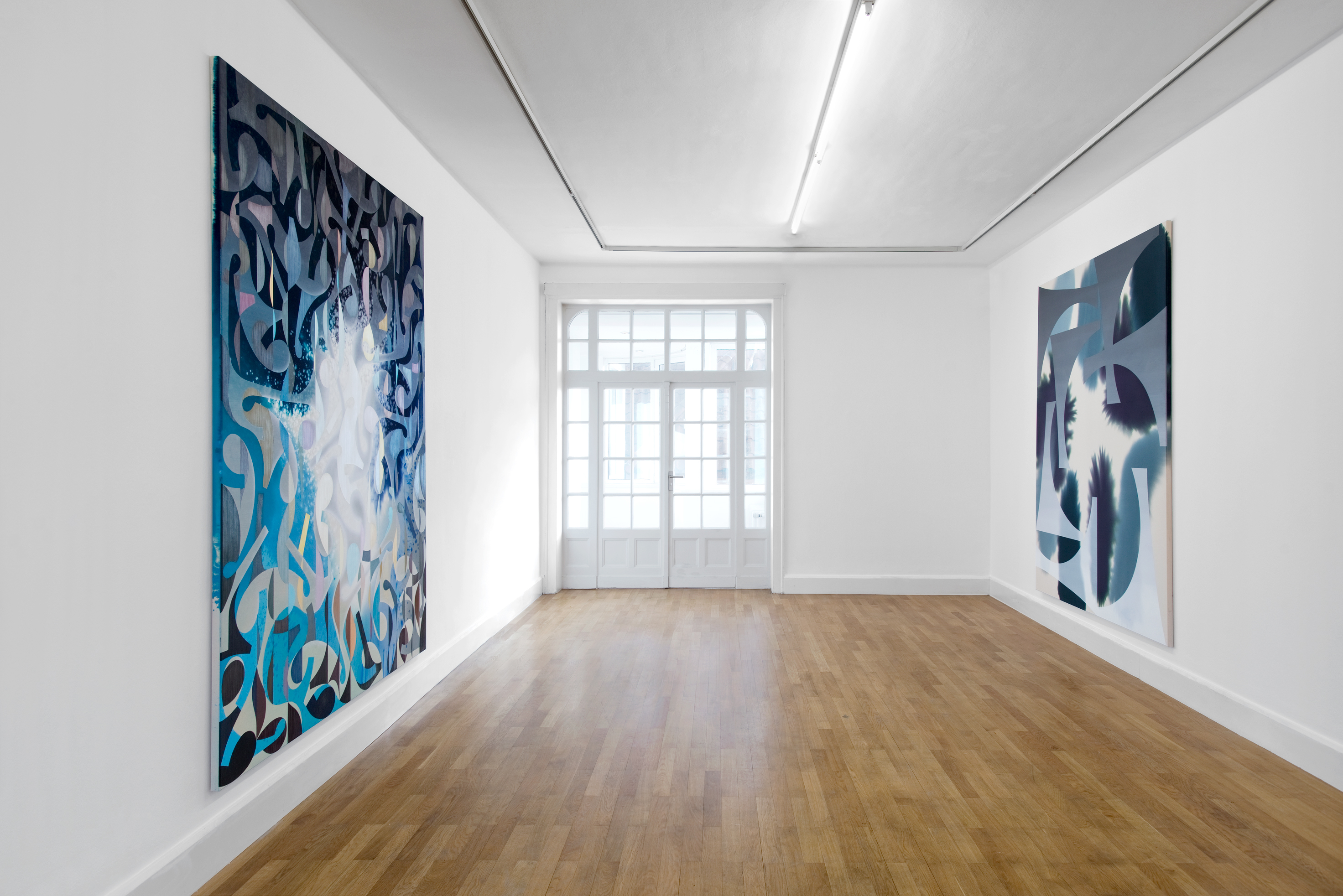

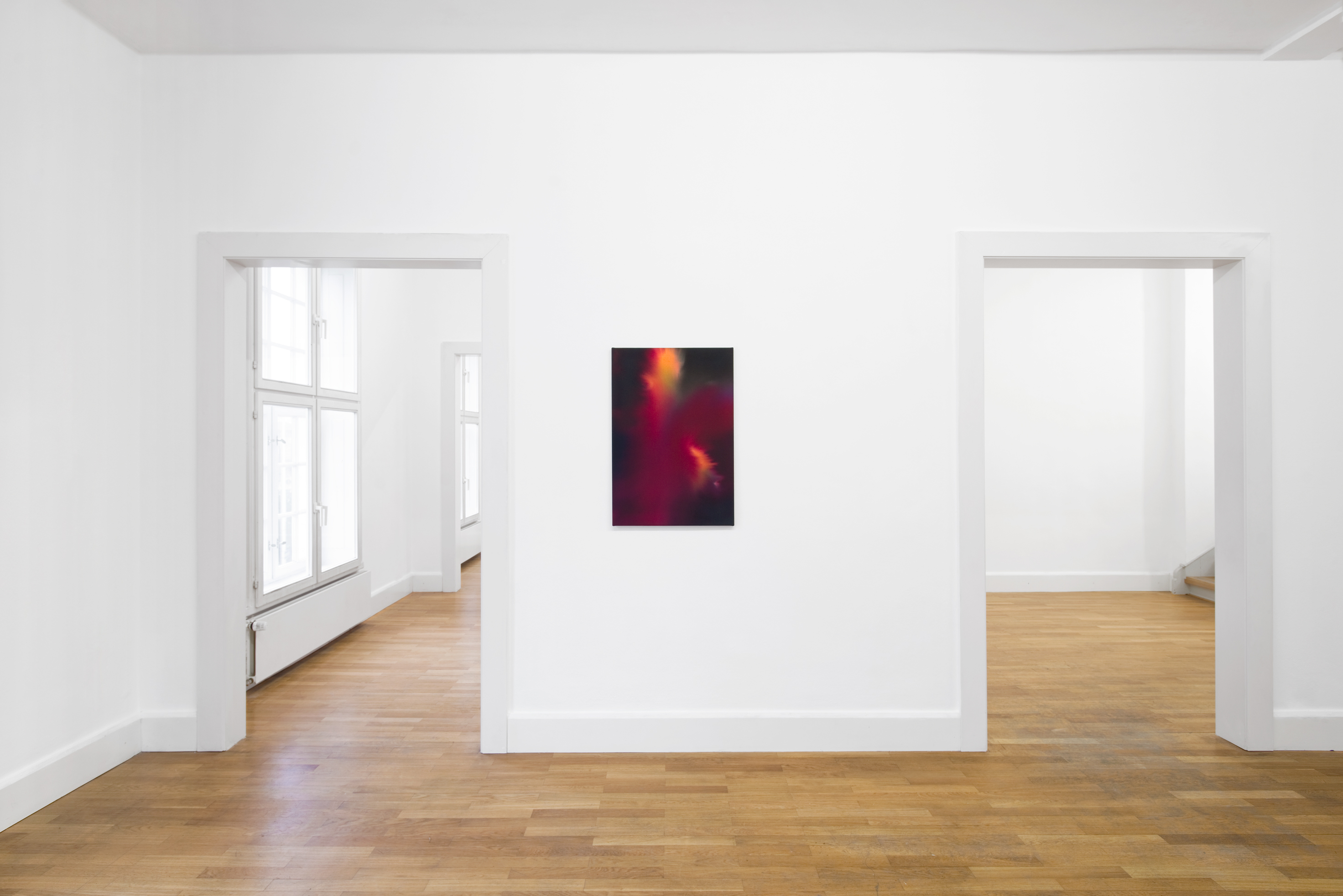
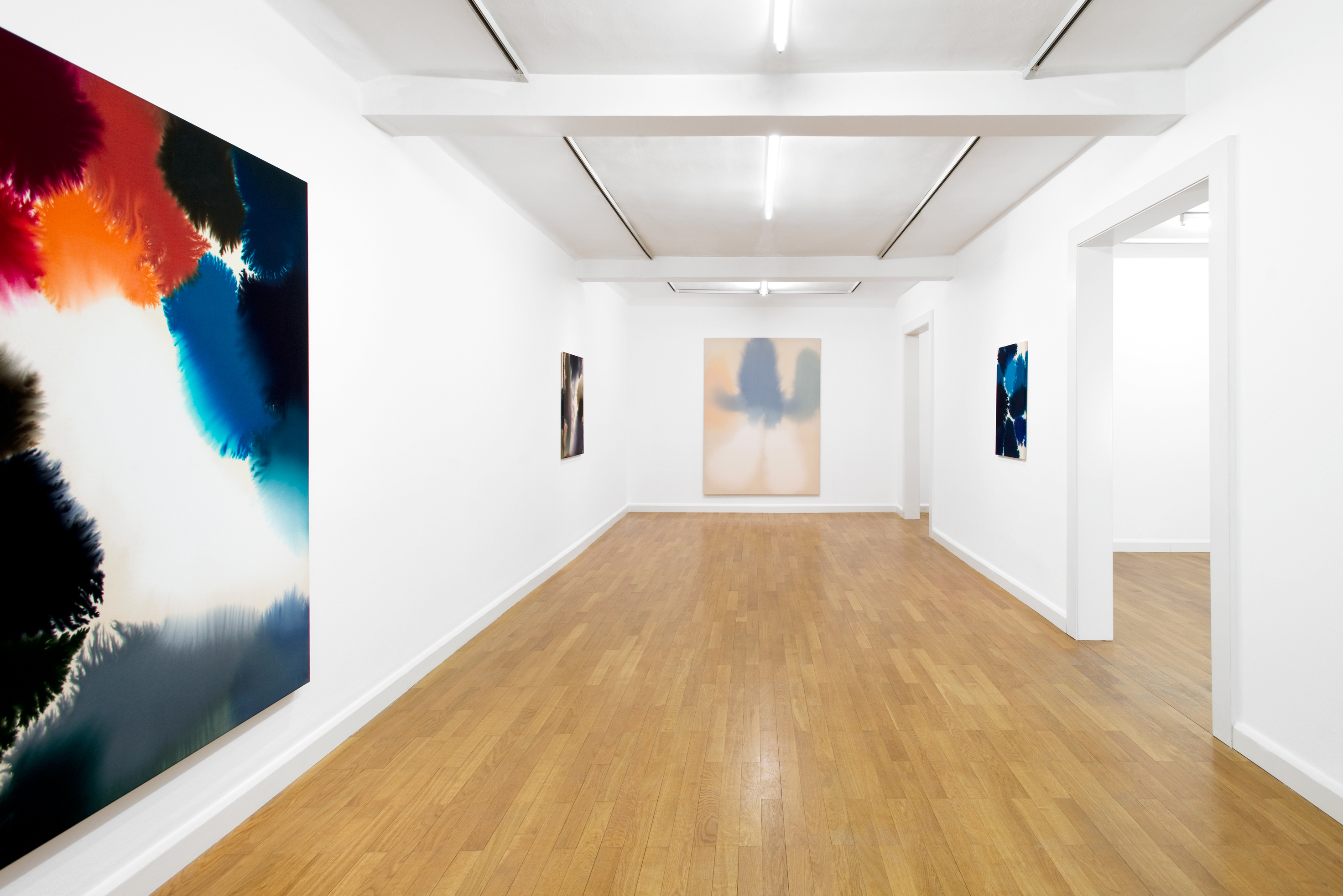

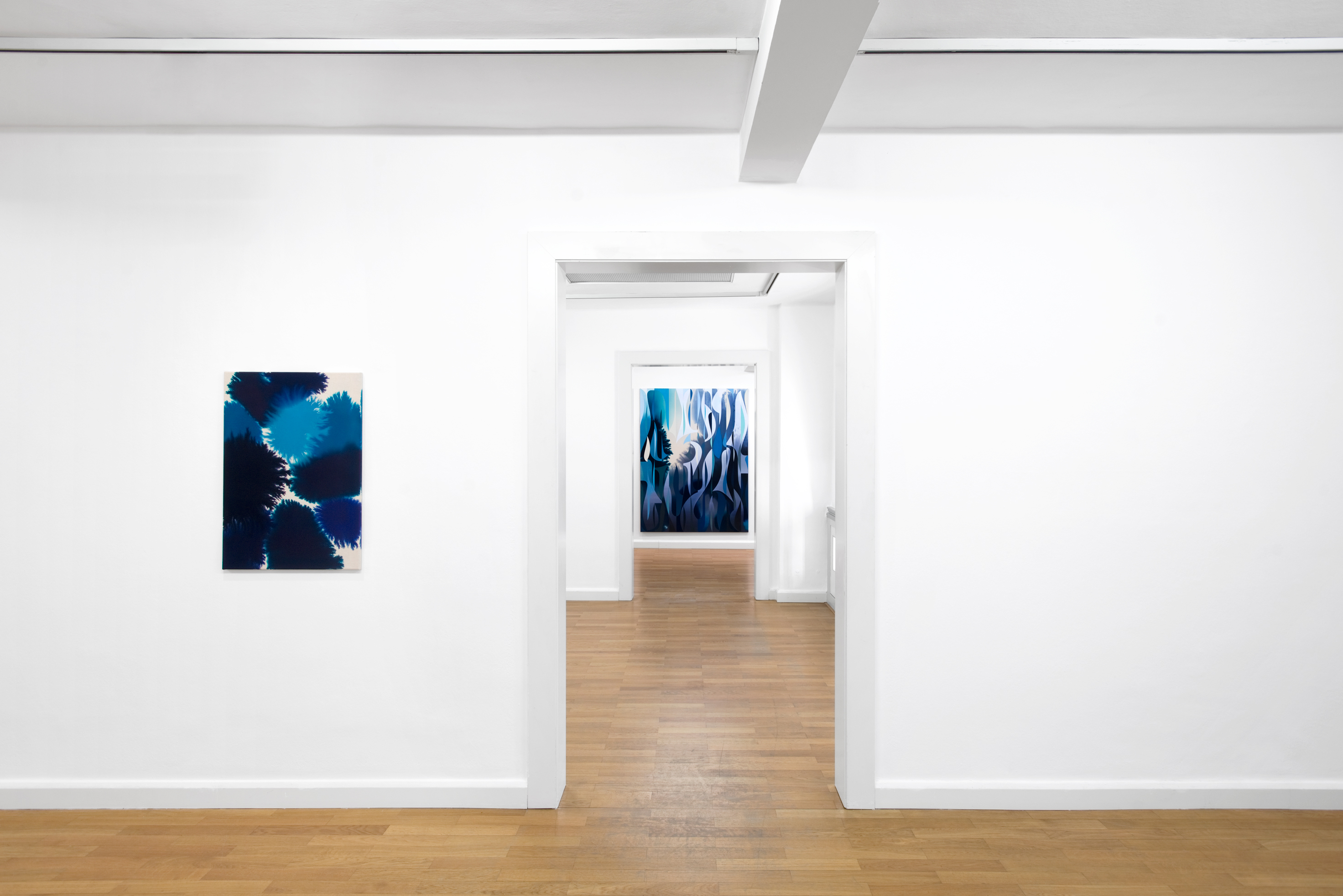


Rot, Gelb und Blau schweben in der Luft. Die Farben scheinen sich von den großformatigen Leinwänden abzulösen und in die Räume der Städtischen Galerie Delmenhorst hineinzufließen.
Giacomo Santiago Rogado – Anfang von etwas ist die erste museale Einzelausstellung
Giacomo Santiago Rogado – Anfang von etwas ist die erste museale Einzelausstellung
von Giacomo Santiago Rogado (* 1979, Luzern) in Deutschland. Die präsentierten Gemälde, darunter eine raumgreifende und begehbare Malerei-Installation, sind eigens für Haus Coburg entstanden. Die Ausstellung ist ein Fest für die Malerei, verführerisch und voller hypnotischer Kraft.
Eugenia Kriwoscheja
Eugenia Kriwoscheja